Forums
- Forums
- Duggy's Reference Hangar
- USAAF / USN Library
- The Douglas SBD Dauntless
The Douglas SBD Dauntless
Post a reply
- Go to Previous topic
- Go to Next topic
- Go to Welcome
- Go to Introduce Yourself
- Go to General Discussion
- Go to Screenshots, Images and Videos
- Go to Off topic
- Go to Works in Progress
- Go to Skinning Tips / Tutorials
- Go to Skin Requests
- Go to IJAAF Library
- Go to Luftwaffe Library
- Go to RAF Library
- Go to USAAF / USN Library
- Go to Misc Library
- Go to The Ops Room
- Go to Made in Germany
- Go to Campaigns and Missions
- Go to Works in Progress
- Go to Juri's Air-Raid Shelter
- Go to Campaigns and Missions
- Go to Works in Progress
- Go to Skinpacks
- Go to External Projects Discussion
- Go to Books & Resources
-
13 years agoTue Mar 01 2016, 03:09pm
 Main AdminThe following text "nicked" from Greg Goebel. THANKS
Main AdminThe following text "nicked" from Greg Goebel. THANKS
DAUNTLESS ORIGINS
* Northrop Corporation had been founded in El Segundo, California, in 1932 by John Northrop, who had been an employee of Douglas Aircraft. It wasn't exactly a parting of the ways between Northrop and Douglas, since Douglas provided him with backing and retained ownership over the Northrop firm. The relationship between Northrop and Douglas was good for a time, with Northrop making a splash with advanced aircraft designs, such as the fast Gamma mailplane.
In 1934, the US Navy Bureau of Aeronautics (BuAer) issued a request for a dive bomber, with Northrop / Douglas senior engineer Edward H. Heinemann submitting a design that was accepted over the competition, the Navy ordering a single prototype under the designation of "XBT-1" -- the "B" for standing for "bomber" and the "T" (somehow) for "Northrop". Initial flight of the prototype was on 19 August 1935, with the aircraft powered by a Pratt & Whitney (P&W) R-1535-66 Twin Wasp Junior two-row radial engine, providing 520 kW (700 HP) and driving a two-bladed propeller. The XBT-1 was refitted with an R-1535-94 Twin Wasp with 615 kW (825 HP) in December 1935.
In September 1936, the Navy ordered 54 production "BT-1s", with 53 actually delivered. The BT-1 featured tailwheel landing gear, with semi-retractable main gear that hinged backwards into fairings under the wings, and a fixed tailwheel. The original design had featured "split flaps" for dive braking, with the flaps extending above and below the wing. These flaps were modified with an array of holes in the production BT-1s, and the "Swiss cheese" flaps would remain a distinctive feature of the subsequent aircraft line. The BT-1 also differed from the XBT-1 in having a larger, rounded tailfin, and a modified cowling.
The BT-1 proved highly unsatisfactory in service, being underpowered and suffering from nasty handling characteristics, but the Navy didn't give up on Northrop. The 54th BT-1 was actually completed as the "XBT-2", with a more powerful engine and other changes. In its initial configuration, the XBT-2 performed its first flight on 25 April 1938, only to still prove disappointing. The aircraft was flown to Langley, Virginia, to be tested in a big wind tunnel operated by the US National Advisory Committee on Aeronautics (NACA, the main predecessor of the modern National Aviation & Space Administration, NASA). After the tests, the aircraft went through an extensive redesign.
By this time, Northrop had quit the company to form another, of course being named "Northrop Aircraft" once more, with the "old" Northrop company reverting to Douglas control as the "El Segundo" division. The drastically modified XBT-2 prototype, which had only a general resemblance to the old BT-1, was accepted by the US Navy in 1939, with a production order placed in February of that year for 144 aircraft, to be designated "SBD-1" -- the "SB" standing for "scout bomber" and the "D" of course for "Douglas". Initial service deliveries of the "Dauntless", as it had been named, were in late 1940.
[2] SBD-1 / SBD-2 / SBD-3
* The Dauntless was a two seat, low wing monoplane. Oddly for a carrier aircraft, it did not have folding wings, the decision having been made to design the wing for structural strength in a way that precluded a wingfold. The wing's outboard panels had a noticeable dihedral, though the tailplane was flat. Control surface arrangement was generally conventional -- ailerons, elevators, rudder, all fabric-covered -- except for large metal flaps, split inboard and outboard, with the outboard section also having a top flap that could be hinged out along with the bottom flap to act as a dive brake. The flaps were all of the "Swiss cheese" configuration. The perforations reduced buffet on a dive and permitted wider extension of the dive brakes, improving braking effect.
The Dauntless had tailwheel landing gear, with the main gear hinged in the wings to retract in towards the fuselage, and with a fixed tailwheel. The pilot and rear gunner / radio operator sat in tandem, the back-seater facing the rear, with the canopy sections sliding towards the center to open.
The Dauntless could carry up to a 725 kilogram (1,600 pound) bomb on a swinging release cradle under the fuselage, and also had a pylon for a single 45 kilogram (100 pound) bomb or other relatively small store under each wing. The release cradle allowed the bomb to clear the propeller during a dive attack. The cradle was not used in level attack, the bomb being dropped directly in that case.
The Dauntless had two 12.7 millimeter (0.50 caliber) Browning machine guns fixed in the top of the nose cowling and firing through the propeller using synchronizing gear. The receivers of the guns protruded into the cockpit, giving the pilot some ability to clear jams. There was also a single hand-held 7.62 millimeter (0.30 caliber) Browning on a rear-facing flexible mount, with this weapon handled by the back-seater. The rear gun was stowed underneath doors on the fuselage behind the cockpit when not in use. An antique-looking telescopic sight was used to aim the forward guns and for dive-bombing attacks.
The SBD-1 was powered by a Wright R-1820-32 Cyclone 9-cylinder air-cooled radial with 745 kW (1,000 HP), driving a three-bladed adjustable-pitch propeller with a spinner. The SBD-1 had a distinctive "fat" carburetor inlet at the top of the engine cowling, and also carried flotation gear for ditching at sea. It had four internal fuel tanks in the wing center section with a total capacity of 796 liters (210 US gallons) -- including two main tanks with 341 liters (90 US gallons) each, and two auxiliary tanks with 57 liters (15 US gallons) each. With bombload, this restricted the operational radius to a mere 370 kilometers (200 NMI). The Navy was not happy about the limited range, nor about the fact that the SBD-1 lacked armor.
Douglas was working on improvements and so the Navy decided to accept the first 57 of the initial order for 144 machines as was, with production flowing to the improved "SBD-2" with the 58th machine. The SBD-2 still lacked armor, but the fuel capacity was increased, with the two main tanks retained, the auxiliary tanks removed, and a 246 liter (65 US gallon) tank added to each outer wing panel to provide a total fuel capacity of 1,175 liters (310 US gallons). Range was proportionately increased, but takeoff weight necessarily increased as well, and one of the Brownings in the cowling was often removed in the field.
The SBD-2 also featured an autopilot; the carburetor intake was reduced in size as well, giving the aircraft a somewhat more modern appearance. The SBD-2s were not everything that was wanted, but the Navy still accepted the remaining 87 aircraft of the initial order in this configuration. Incidentally, there's a common belief that the Marines tend to be on the back end of the US military procurement queue; Marines will on occasion object to this suggestion, but it should be noted that all the SBD-1s were passed on the USMC while the Navy retained the SBD-2s. The initial SBD color scheme was light gray overall, this being changed to light gray underneath and medium blue gray on top. Prewar national insignia featured a five-pointed star with a red "meatball" in the center.
* Neither the SBD-1 nor the SBD-2 were really acceptable for combat. The first Dauntless that was up to being sent into action was the "SBD-3", which ironically was produced for the Aeronavale, the French Navy's air arm. 174 were ordered by the French, but with the fall of France in the spring of 1940 that production batch was picked up by the US Navy, which ordered 410 more, for a total of 584
The SBD-3 seemed almost identical to the SBD-2 externally, but featured crew and fuel system armor protection, plus an armored windscreen. The internal fuel tanks were all self-sealing, and provided a fuel supply of 985 liters (260 US gallons). The SBD-3 was fitted with an R-1820-53 engine, with the same power output as the older R-1820-32 but with some technical improvements. The cowling configuration was modified slightly.
Some sources claim that the SBD-1 and SBD-2 actually had 7.62 millimeter Brownings in the cowling and that the 12.7 millimeter Brownings were actually introduced in the SBD-3. The single 7.62 millimeter rear gun was often updated in the field to a double mount, with an improved double gun system with a power-boosted ring mount introduced late in SBD-3 production. The new production rear gun fit eliminated the rear-fuselage doors for stowage of the rear guns in favor of sliding panels.
Although efforts were made to decrease weight, for example through elimination of the flotation gear and use of lighter airframe components, the empty weight of the SBD-3 was 2,800 kilograms (6,180 pounds), versus the 2,505 kilograms (5,525 pounds) of the SBD-1 and SBD-2. However, performance only suffered slightly.
BELOW SBD-1
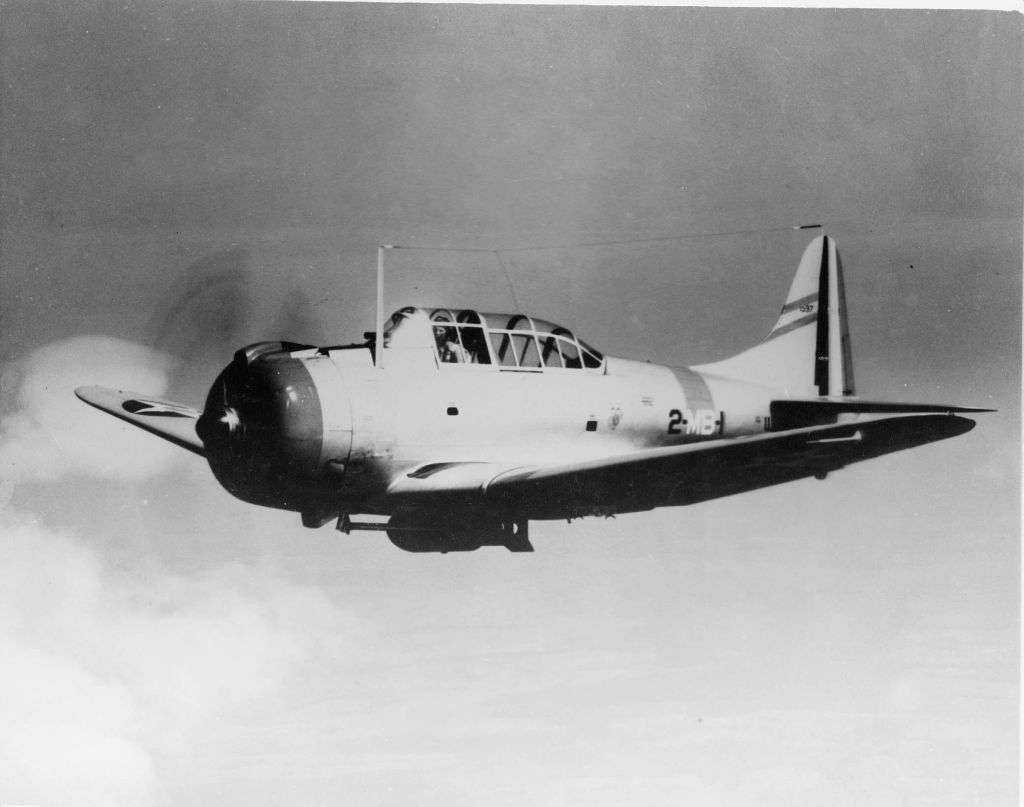









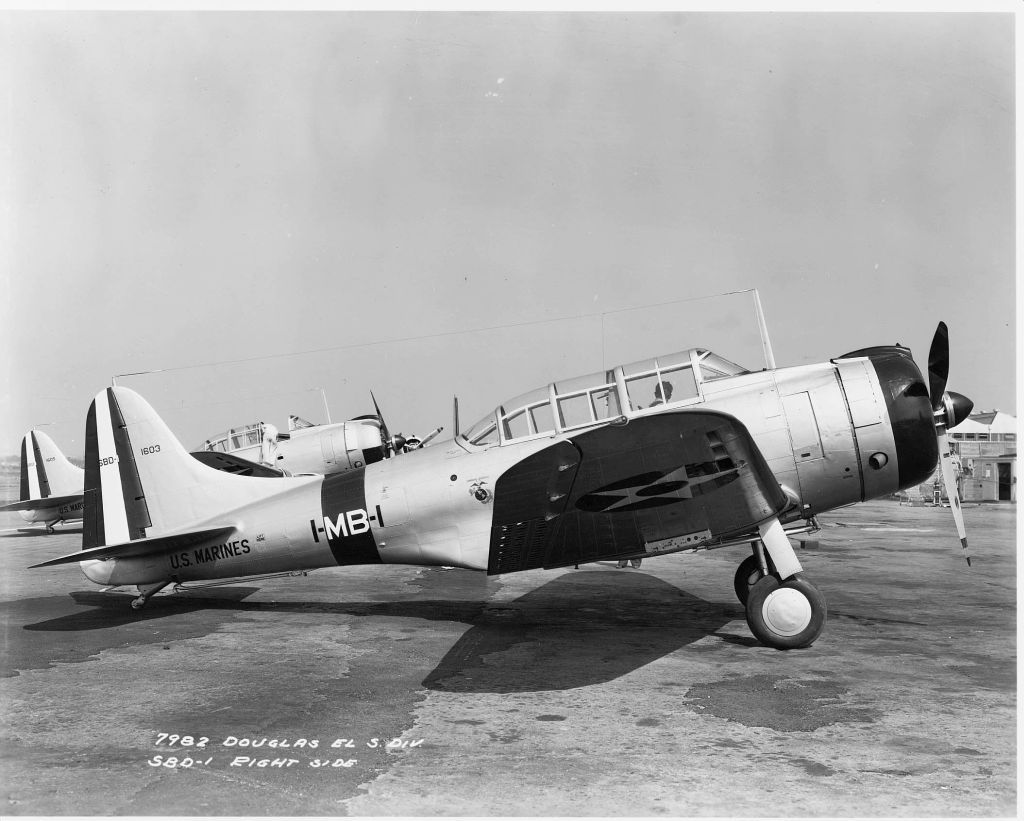



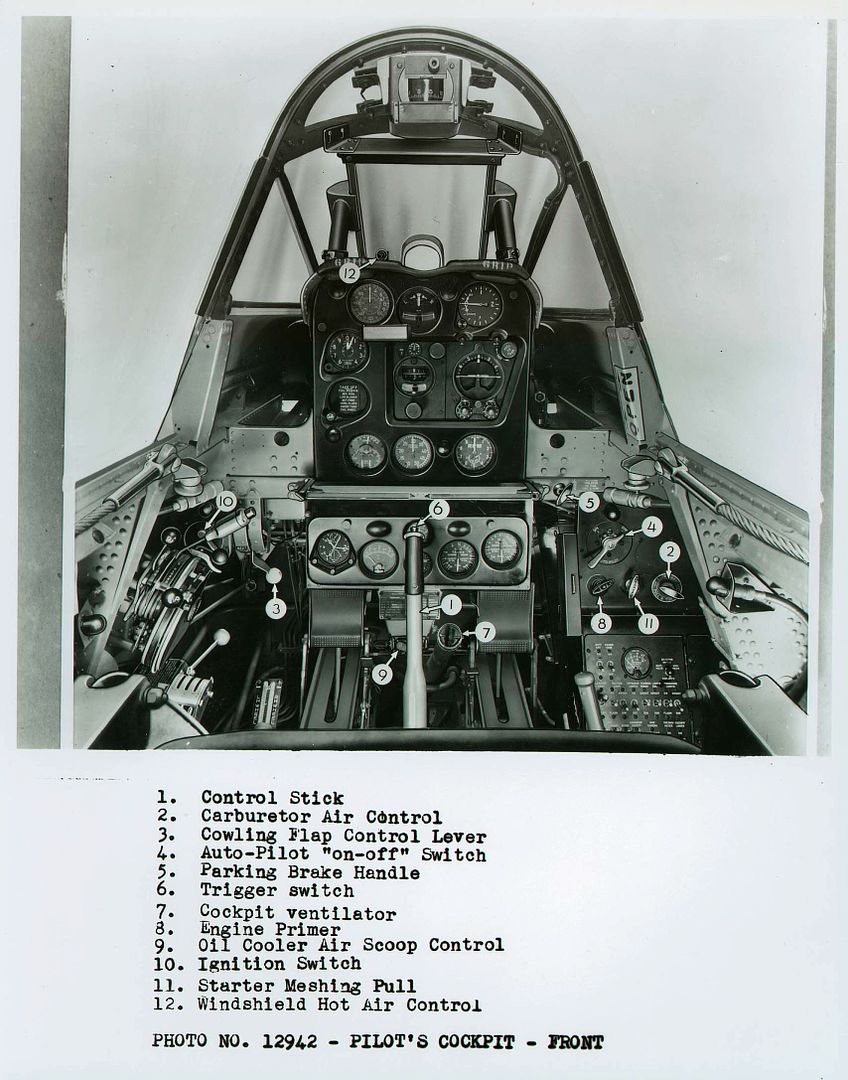



Below SBD-2/3


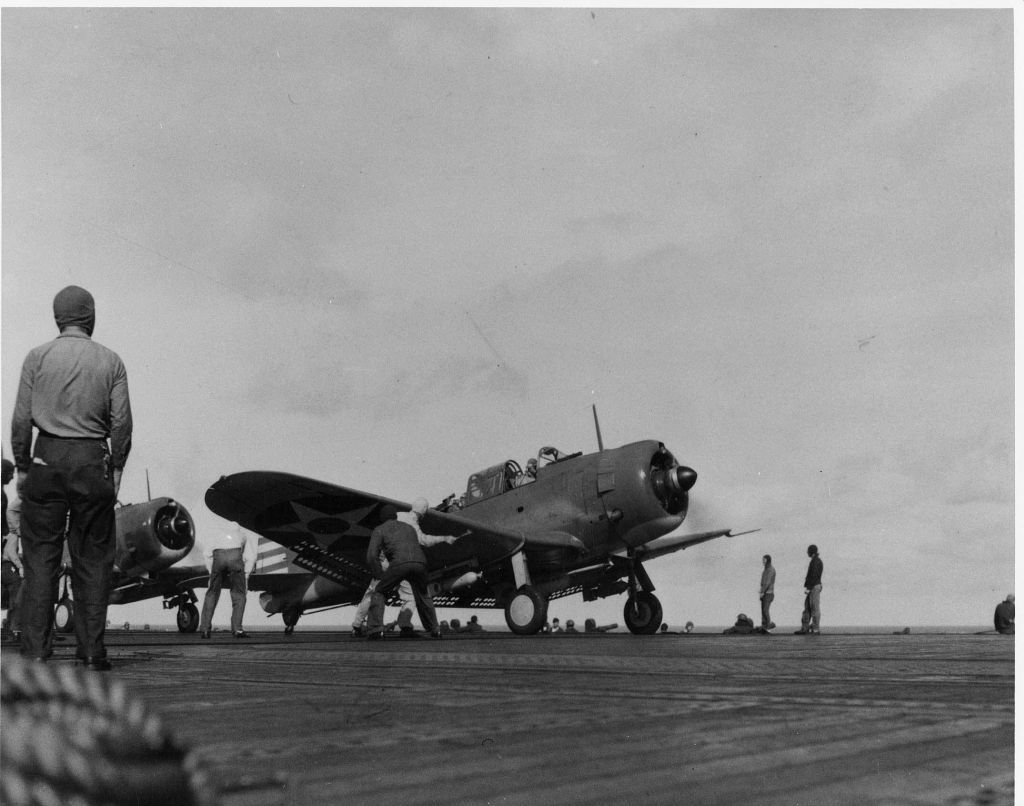







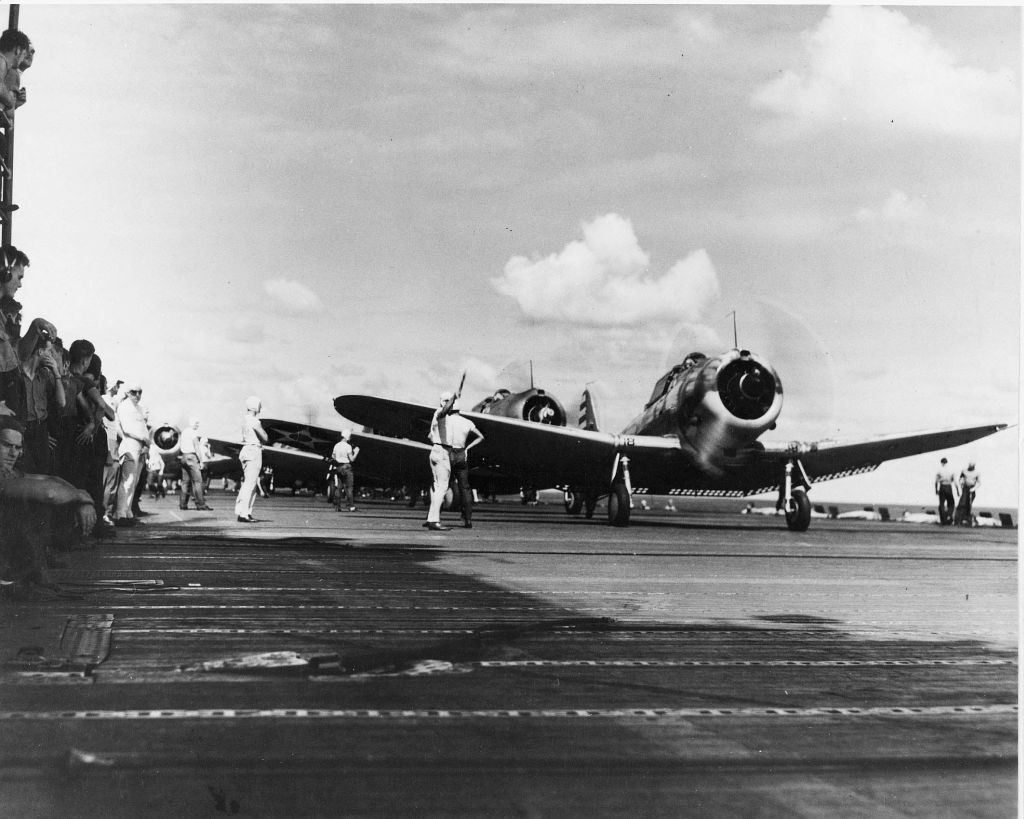












































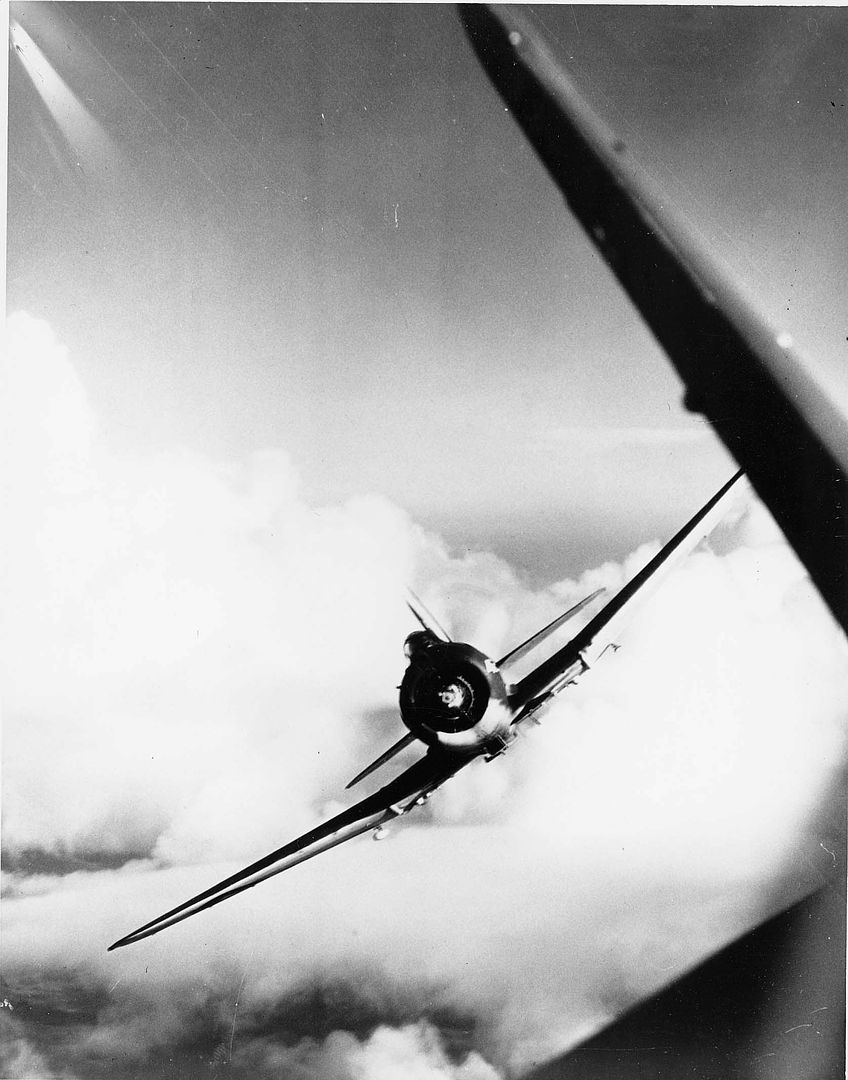
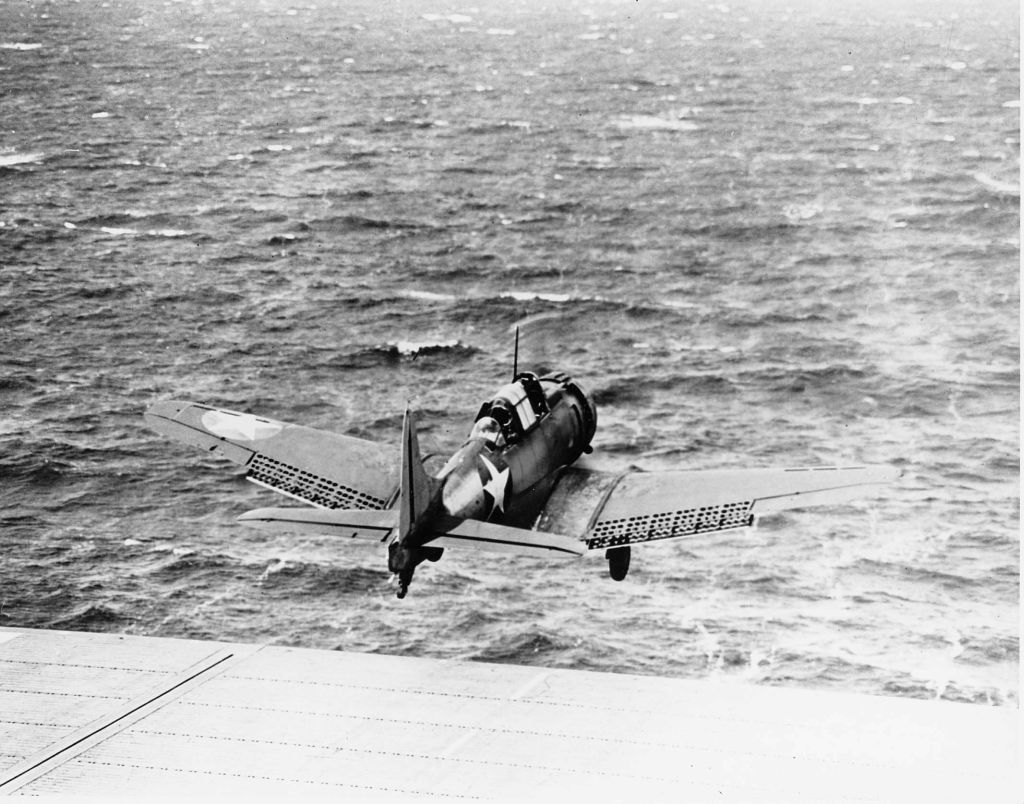






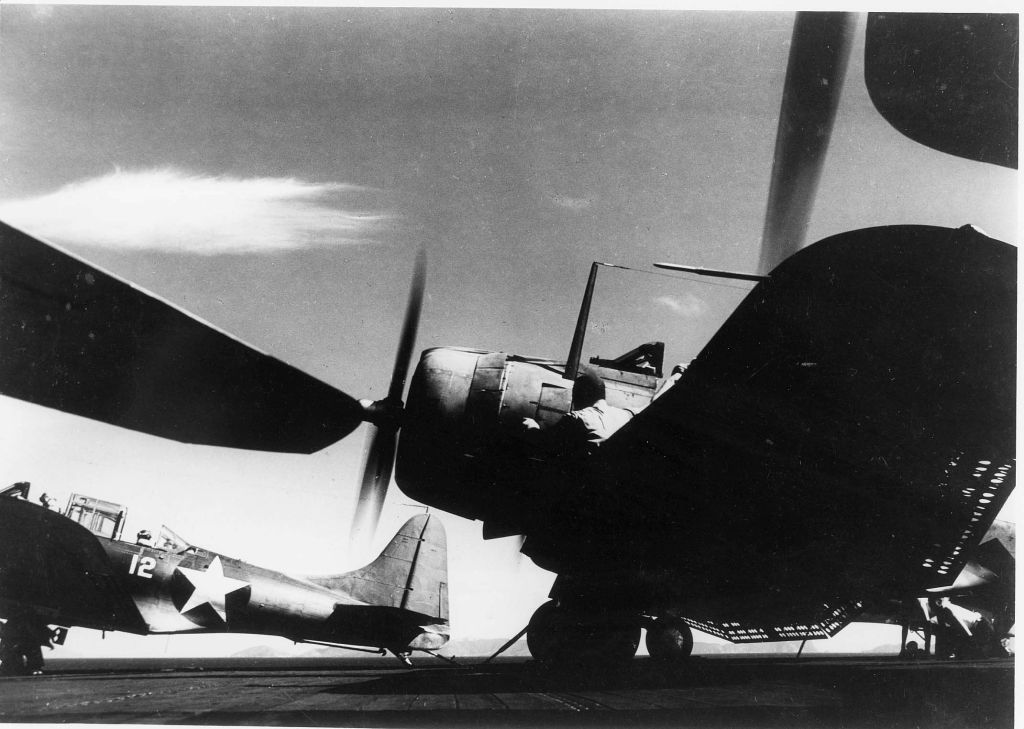

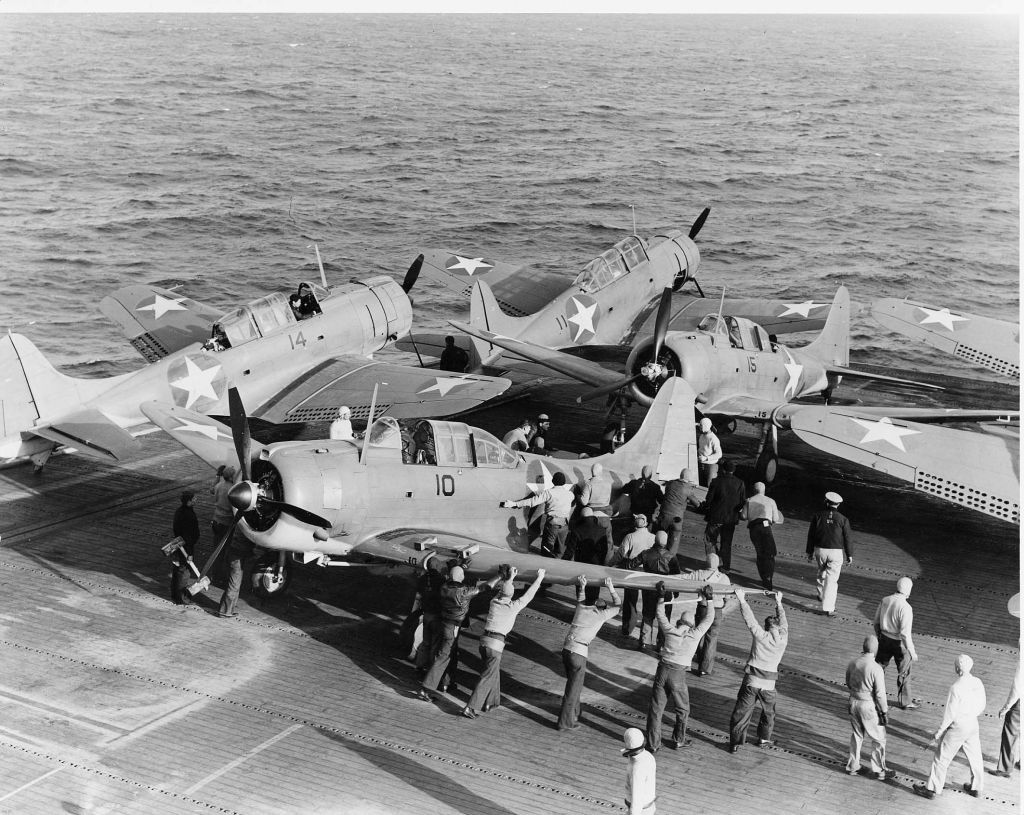





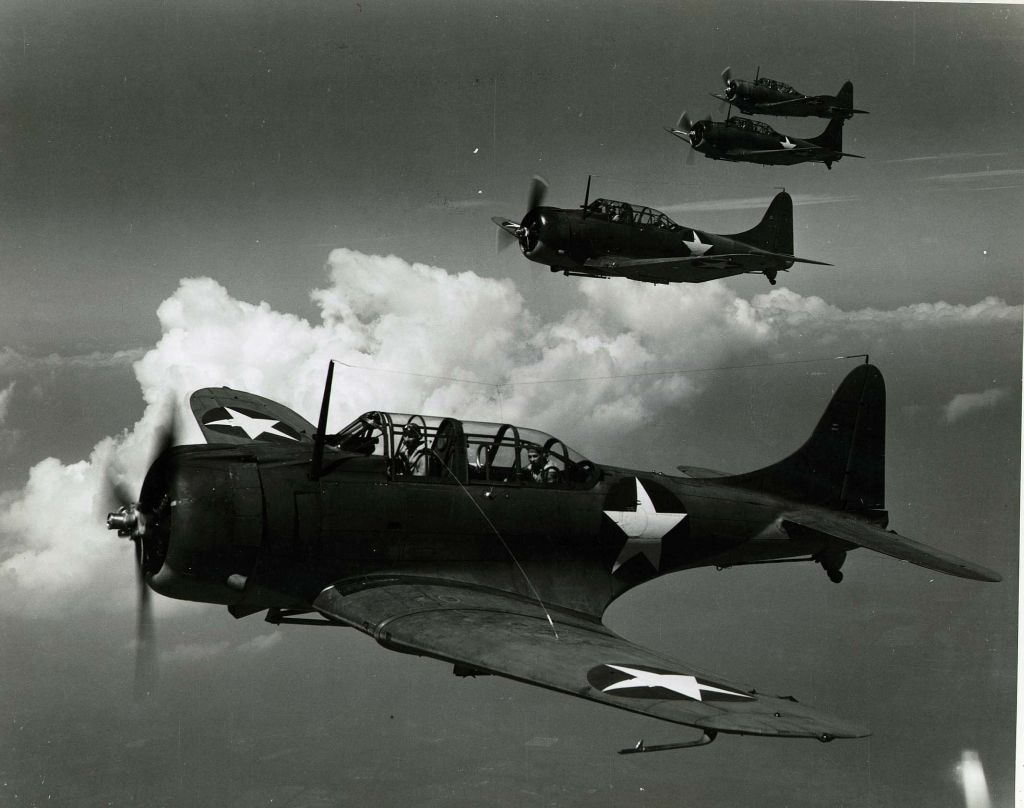





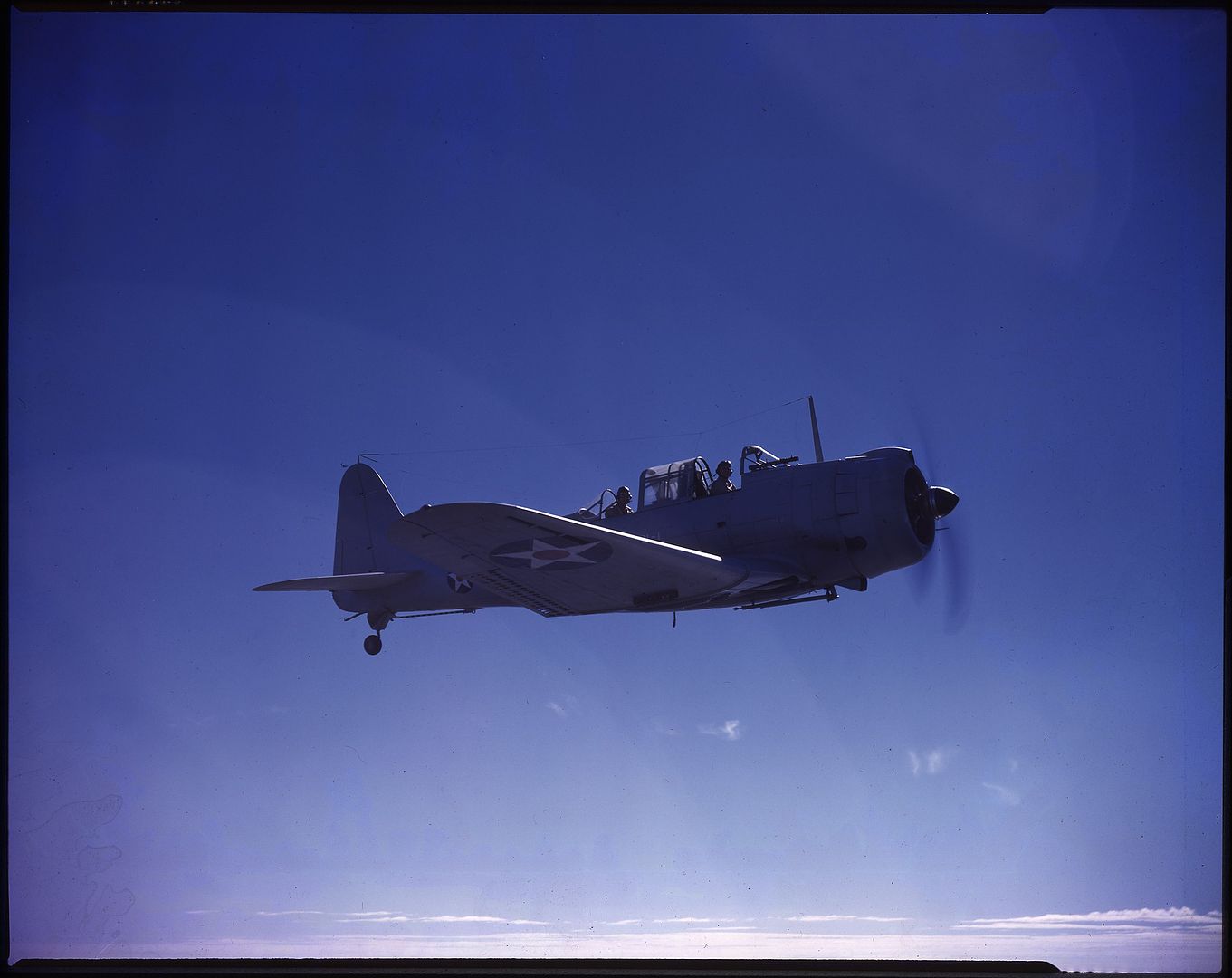

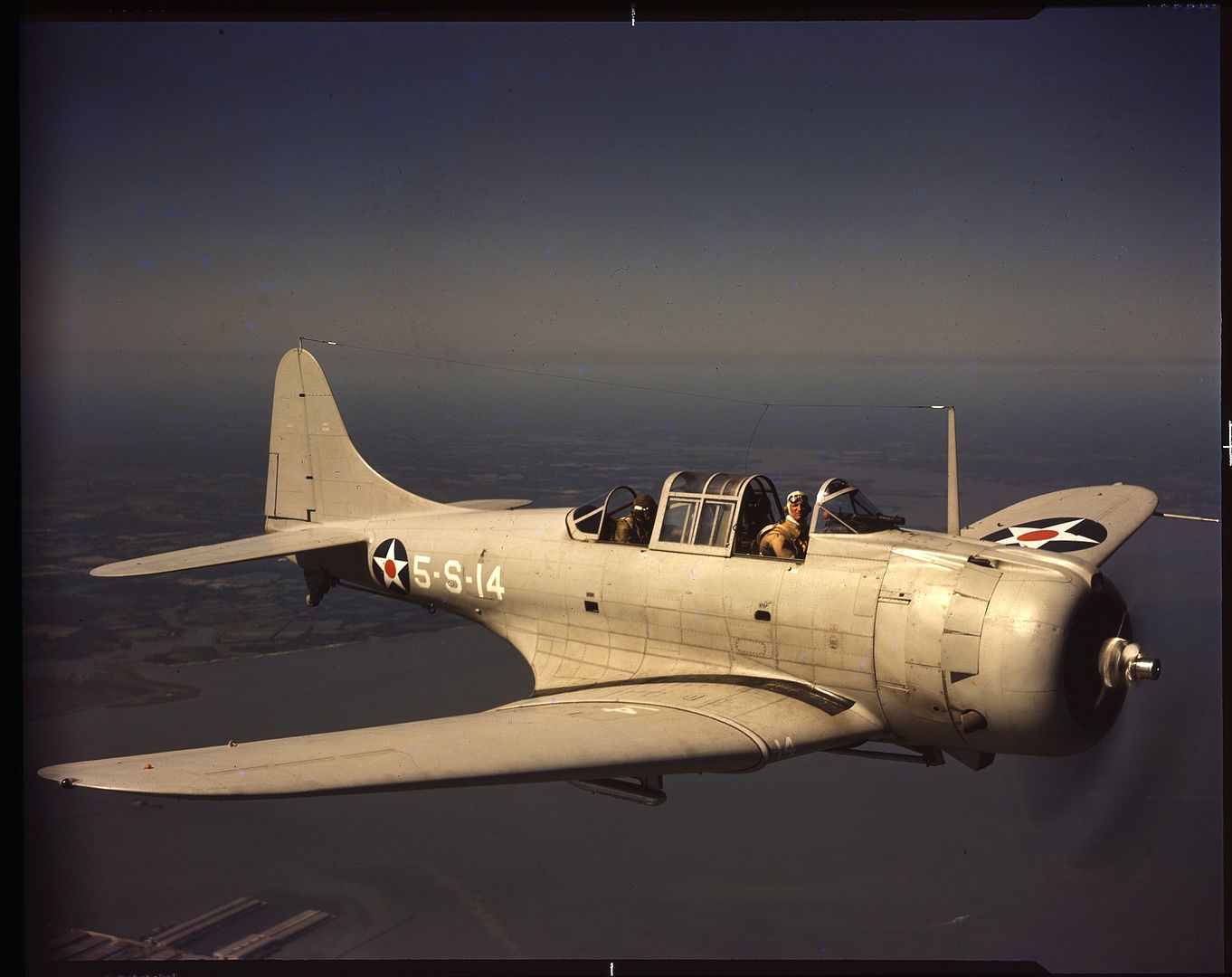
-
13 years agoTue Mar 26 2013, 06:26pm
 Main Admin[3] DAUNTLESS IN COMBAT 1941:1942
Main Admin[3] DAUNTLESS IN COMBAT 1941:1942
* The Marines started to receive SBD-1s in June 1940, and by the time the Imperial Japanese Navy (IJN) attacked on Pearl Harbor on 7 December 1941, it was being flown by "Marine Air Group (MAG) 11" and MAG 21. MAG 21 was stationed in Hawaii and its Dauntlesses were shot up on the ground during the Pearl Harbor attack, with 17 destroyed and the remaining 12 badly damaged. Surviving Navy SBDs hunted for the Japanese fleet over the following days, but the IJN had made a clean getaway. However, on 10 December a Dauntless claimed the sinking of the IJN submarine I-70. The SBD had drawn its first blood.
In early 1942, the US Navy conducted a series of hit-and-run raids on Japanese bases in the Pacific. They were intended to bolster civilian morale and hopefully throw the Japanese off balance. The "revenge raids" caused little harm but substantial irritation to the Japanese, and they provided combat experience to Navy crews that would come in useful when the time came to take serious action against the enemy. One change resulting from these early operations was the elimination of the red "meatball" in the middle of the US national insignia since it tended to look like a Japanese "rising sun" from a distance, leading to "friendly-fire" problems.
In early May 1942, US Navy signals intelligence revealed that the Japanese were planning an amphibious assault against Port Moresby in southern New Guinea, increasing the threat to Australia. A US Navy task force built around the carriers LEXINGTON and YORKTOWN moved to block the Japanese. On 7 May 1942, Dauntlesses sank the light carrier SHOHO, resulting in the excited report: "Scratch one flattop!" However, the next day the Japanese got the better of the match, sinking the LEXINGTON and damaging the YORKTOWN, though the SBDs badly damaged the heavy carrier SHOKAKU in return. Both sides also lost smaller vessels and numbers of planes, with the Japanese suffering greater aerial losses.
The results of the Battle of the Coral Sea, as the confrontation became known in the history books, gave the Japanese a clear but not overwhelming tactical victory -- though they believed, with some reason, that they had sunk both the LEXINGTON and YORKTOWN and were very enthusiastic about the results of the clash. However, the Americans, who had been losing badly in general since the beginning of the war in the Pacific, were encouraged at getting into a fight with the IJN and inflicting roughly as much damage on the Japanese as the Japanese had inflicted on them. In any case, the Japanese operation against Port Moresby was called off, making the battle a clear strategic win for the Americans.
* The IJN had enough of putting up with annoyances and confrontations with the Americans, and planned a "decisive battle" that would knock the US Navy out of the Pacific once and for all. Masked by a diversionary operation to the Aleutians in the far North Pacific, a major Japanese fleet would lure the Americans into battle near Midway Island in the Central Pacific and destroy them.
Fortunately, US Navy signals intelligence was once again a step ahead of the IJN, and a task force built around the hastily-repaired YORKTOWN, as well as the ENTERPRISE and HORNET, was ready for them. On 4 June, the Americans found the Japanese fleet first, with an attack by Douglas TBD Devastator torpedo bombers being badly slaughtered. However, the Devastators had managed to distract the Japanese so that they were unprepared when SBDs then came screaming out of the sky on carriers crowded with aircraft loaded with bombs and fuel for a counterstrike. The carriers AKAGI, KAGA, and SORYU were mortally wounded. The carrier HIRYU, which had been steaming separately, launched an attack which mortally wounded the YORKTOWN, only to be then hit by SBDs and chewed up so badly that it had to be scuttled the next day. The day after that, 6 June, Dauntlesses also sank the cruiser MIKUMA.
The US Navy had scored the biggest upset victory in the service's history, with an inferior force inflicting a staggering defeat on a superior one, sinking almost half of the IJN's carrier tonnage. The YORKTOWN was lost, but over the long run the Americans could make good their losses far more easily than the Japanese. The Japanese offensive across the Pacific had finally lost its momentum, though the Americans had a year of more of hard fighting ahead of them before the momentum built up in their favor.
* The SBD played a crucial role at Midway, and would have paid for itself just with that battle alone. However, although the Dauntless was a somewhat antiquated design, in particular lacking in performance and with light machine-gun armament, it was rugged as well as effective, and Navy and Marine flight crews acquired an affinity for it. It was noisy and drafty to fly, but it handled well.
The virtues of the "Slow But Deadly" Dauntless seemed to more than make up for its defects, and though it was to be replaced by the Curtiss SB2C Helldiver, the Helldiver proved a very troublesome aircraft and the Dauntless would hang on in service much longer than anyone expected. It served with distinction in the fight for Guadalcanal, beginning in August 1942, and in the invasion of North Africa, Operation TORCH, in November 1942. The Dauntless would also fly in an operation against Nazi installations in Norway in October 1943, but otherwise its further operations against the Germans would be in the antisubmarine warfare role, carrying depth charges.
SBD-4
* Further variants of the Dauntless were produced. The SBD-4 was very similar to the SBD-3 but featured a 24 volt DC electrical system, replacing the older 12 volt DC system. The updated power system was intended to support improved avionics, including navigation gear and the ASB longwave radar, with a Yagi "fishbone"-style antenna under each wing. Production constraints on the ASB meant that early SBD-4s were not delivered with radar, being updated with it in the field. The SBD-4 also featured a new Hamilton Standard constant-speed variable propeller. The old spinner was no longer fitted, it having been often removed from Dauntlesses in the field anyway. The Navy and Marines received 780 SBD-4s, with deliveries beginning in October 1942.
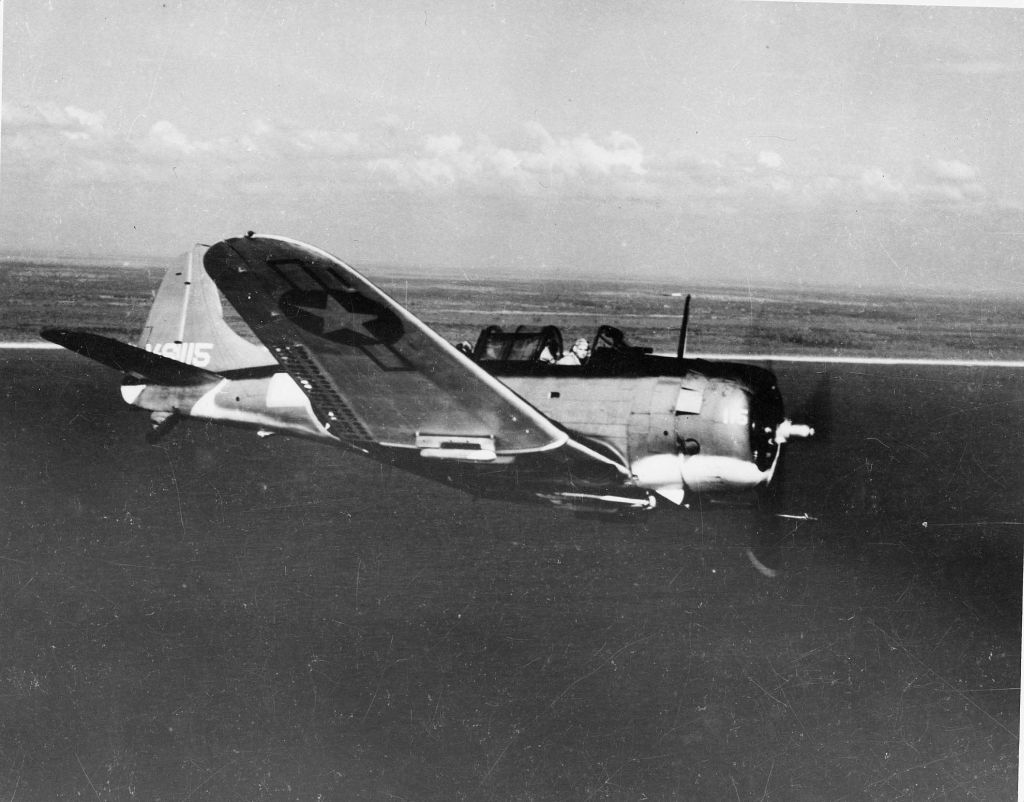


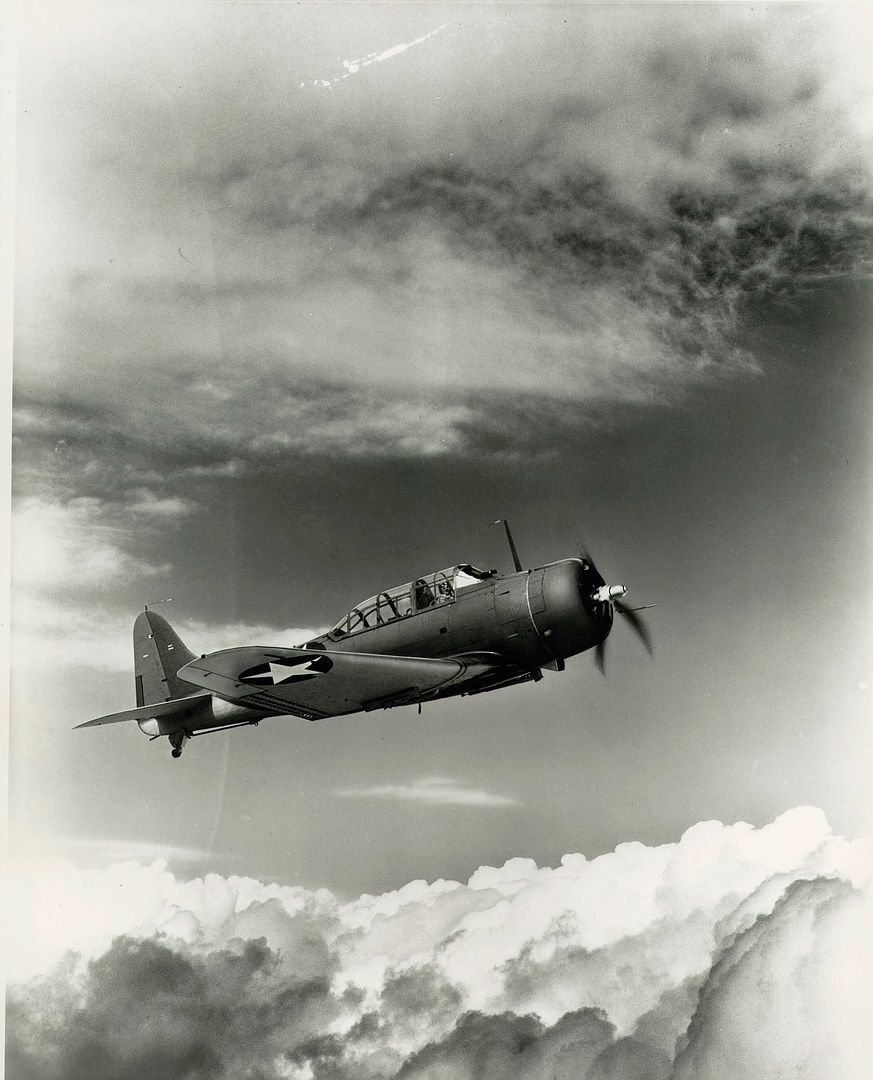

















-
13 years agoWed Mar 13 2013, 07:22pm
 Main AdminSBD-5
Main AdminSBD-5
* The SBD-5 was the definitive Dauntless model, featuring a further uprated Wright R-1820-60 Cyclone engine with 890 kW (1,200 HP), with a modified cowling that eliminated the carburetor intake scoop in the upper lip. A second, very noticeable change was the replacement of the old telescopic sight, which tended to fog up in rapid dives, with a modern reflector sight. Due to an increase in empty weight, the additional power didn't result in a significant increase in performance. The additional weight also meant less range, but the SBD-5 featured "wet" wing pylons to allow it to carry an external tank with a capacity of 220 liters (58 US gallons) on each wing, instead of a bomb or depth charge.
DOUGLAS SBD-5 DAUNTLESS:
_____________________ _________________ ___________________
spec metric english
_____________________ _________________ ___________________
wingspan 12.66 meters 41 feet 6.5 inches
wing area 30.2 sq_meters 325 sq_feet
length 10.09 meters 33 feet 1.5 inches
height 4.14 meters 13 feet 7 inches
empty weight 2,963 kilograms 6,533 pounds
max loaded weight 4,854 kilograms 10,700 pounds
maximum speed 406 KPH 252 MPH / 220 KT
service ceiling 7,955 meters 26,100 feet
range 1,794 kilometers 1,115 MI / 970 NMI
The Navy obtained 2,965 SBD-5s. Although the Dauntless was seen as clearly past its prime, with the lack of folding wings being a severe sore point for carrier operations, when US Navy began to obtain new carriers in mid-1943 to conduct offensive operations against Japan's Pacific empire, the Dauntless was at the forefront. It would remain so into 1944, with its swan song in full carrier operations being the invasion of the Marianas in June 1944. The Dauntless would continue to fight from land bases in a secondary role to the end of the war.
By mid-1943, the general color pattern for a Dauntless was three-color, with light gray underneath, along with medium and light blue gray on top. National insignia featured a red outline for a time, but this scheme didn't work out and was quickly abandoned. Dauntlesses flying on Atlantic patrol were painted flat white with dark gull gray patterning topside. Some pictures survive of Dauntlesses in overall dark blue, a common US Navy color scheme late in the war.
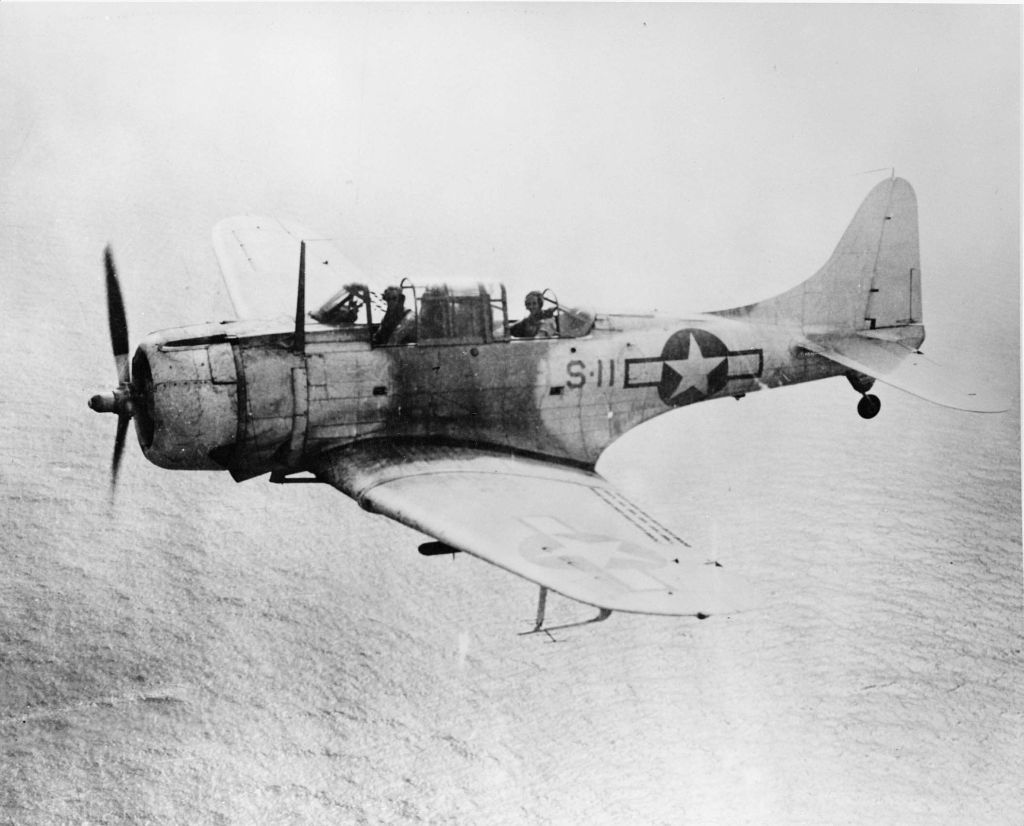














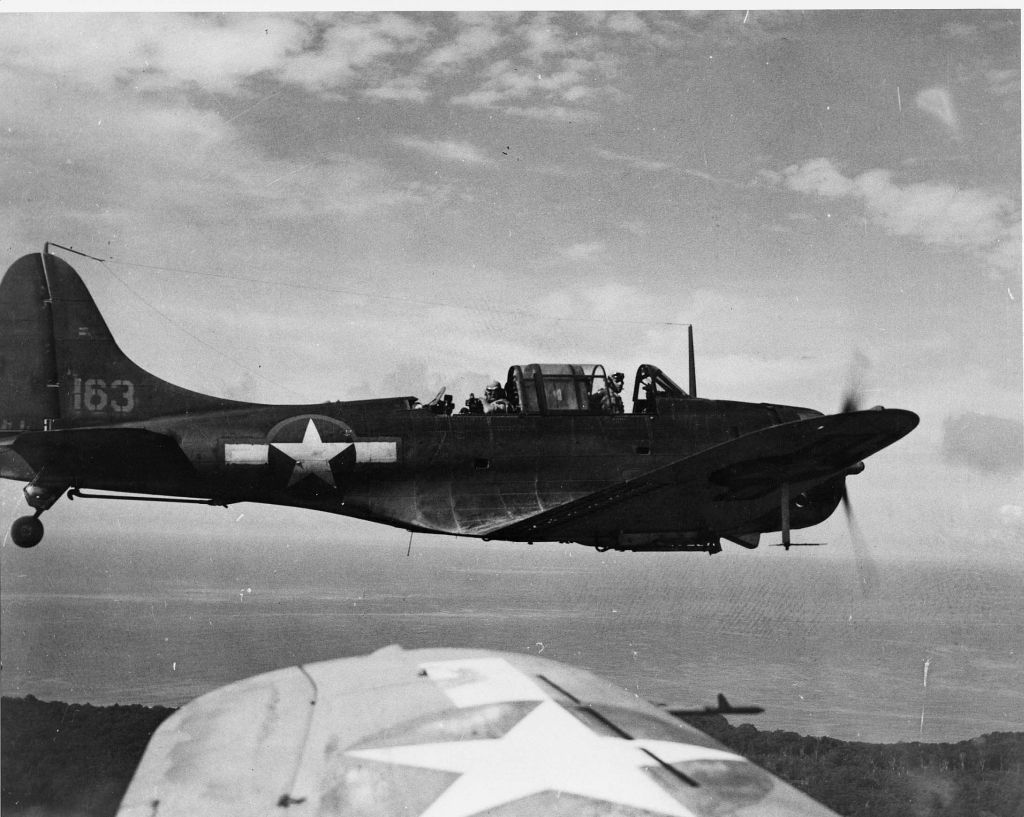




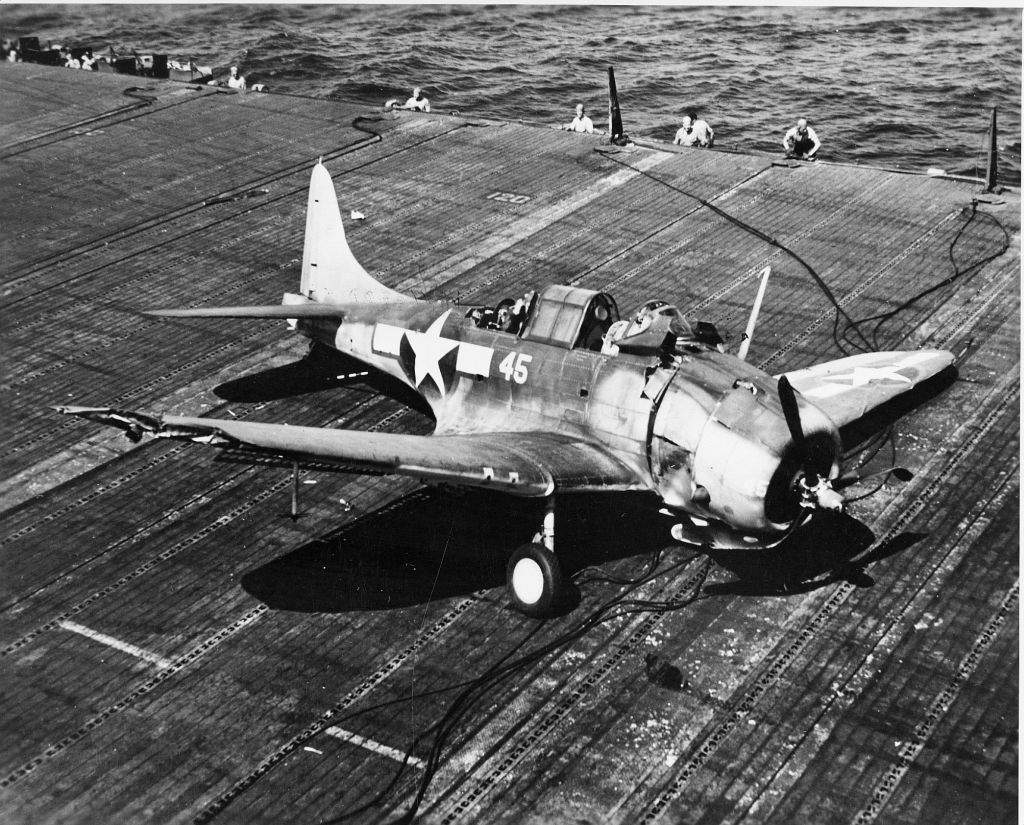




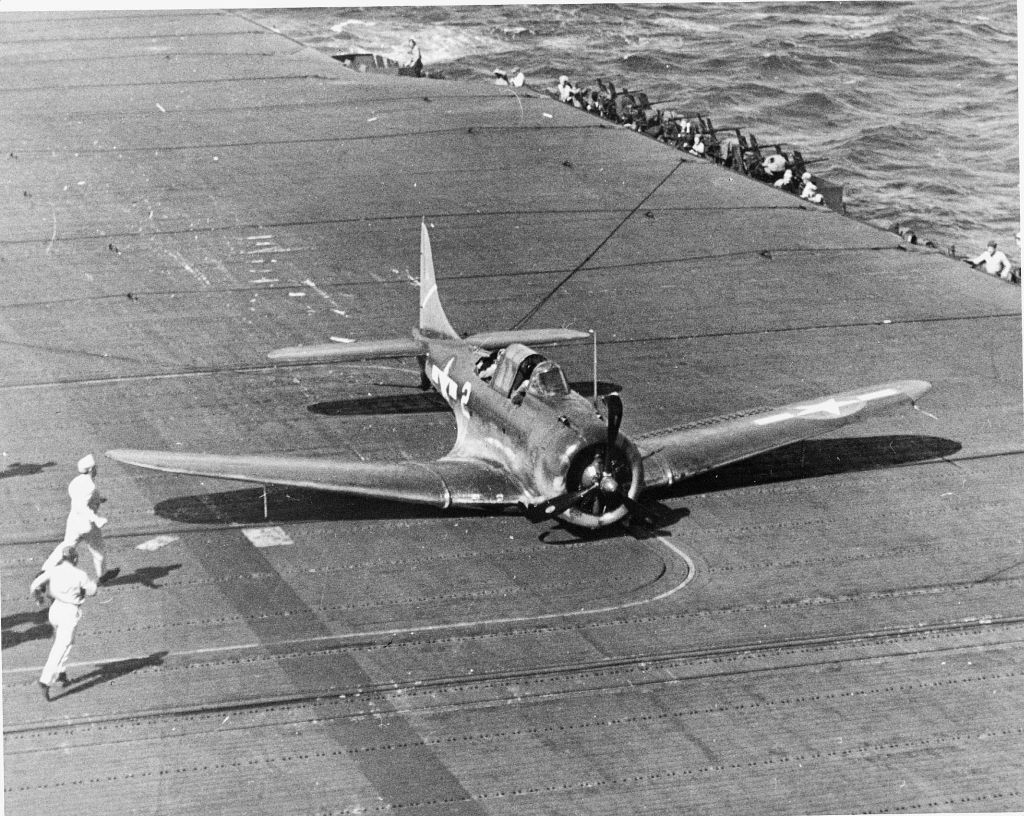





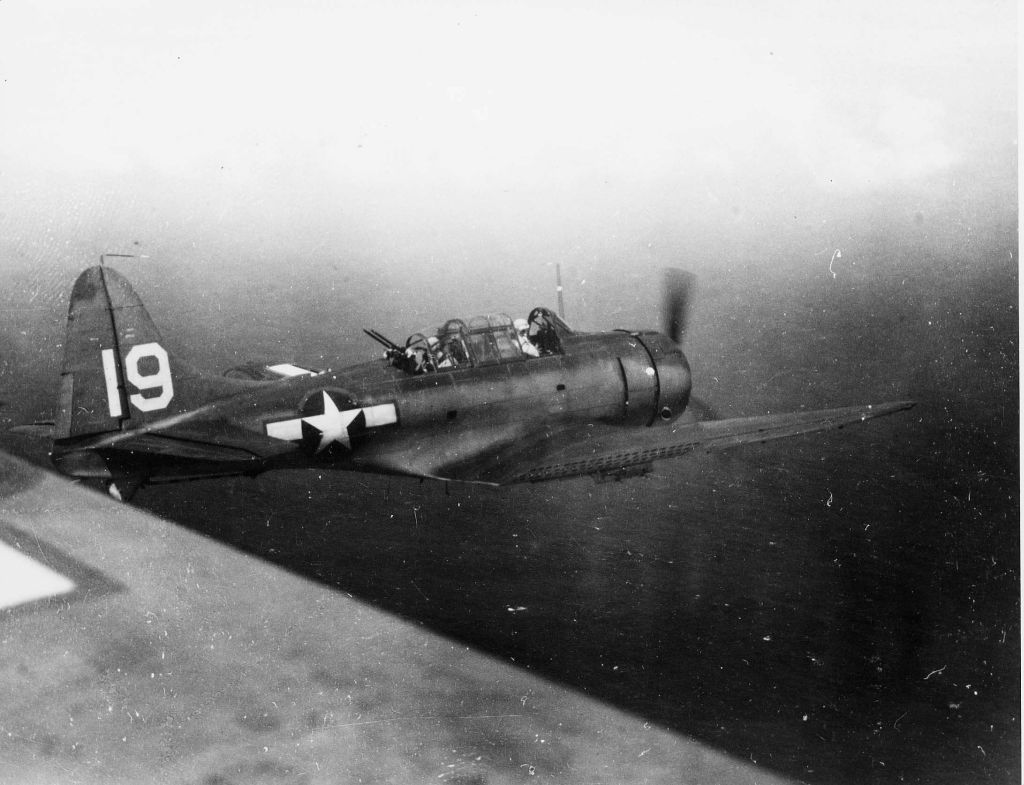






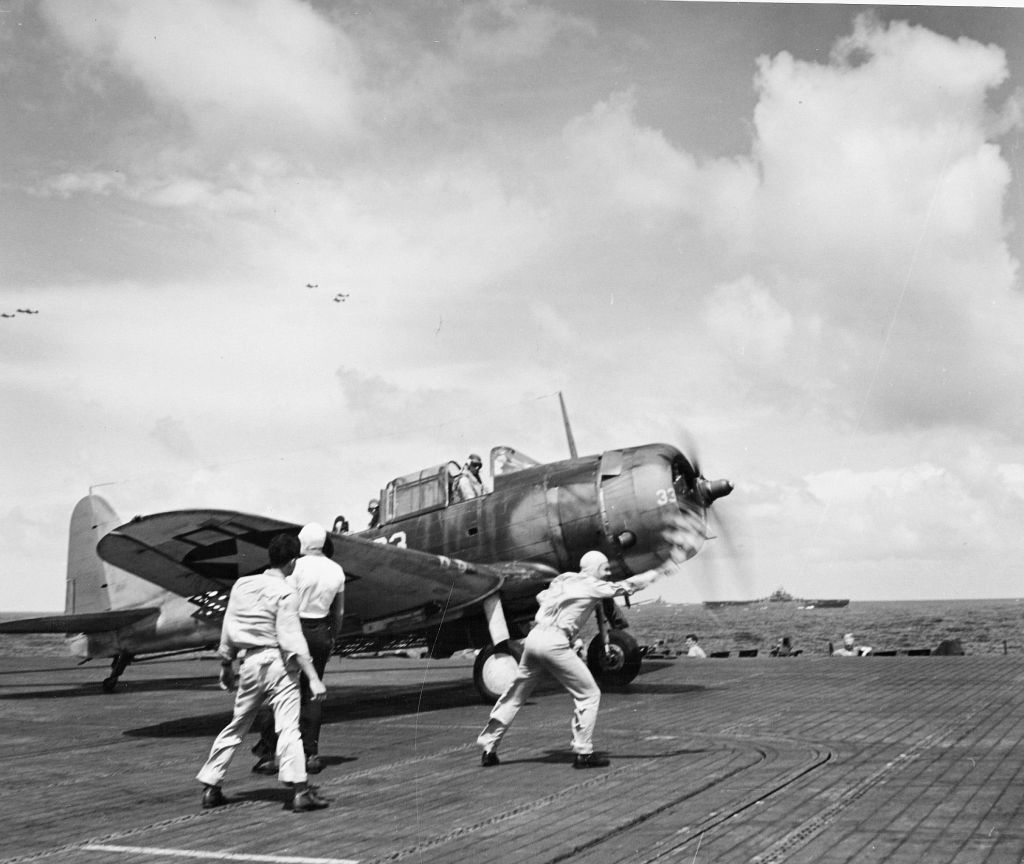


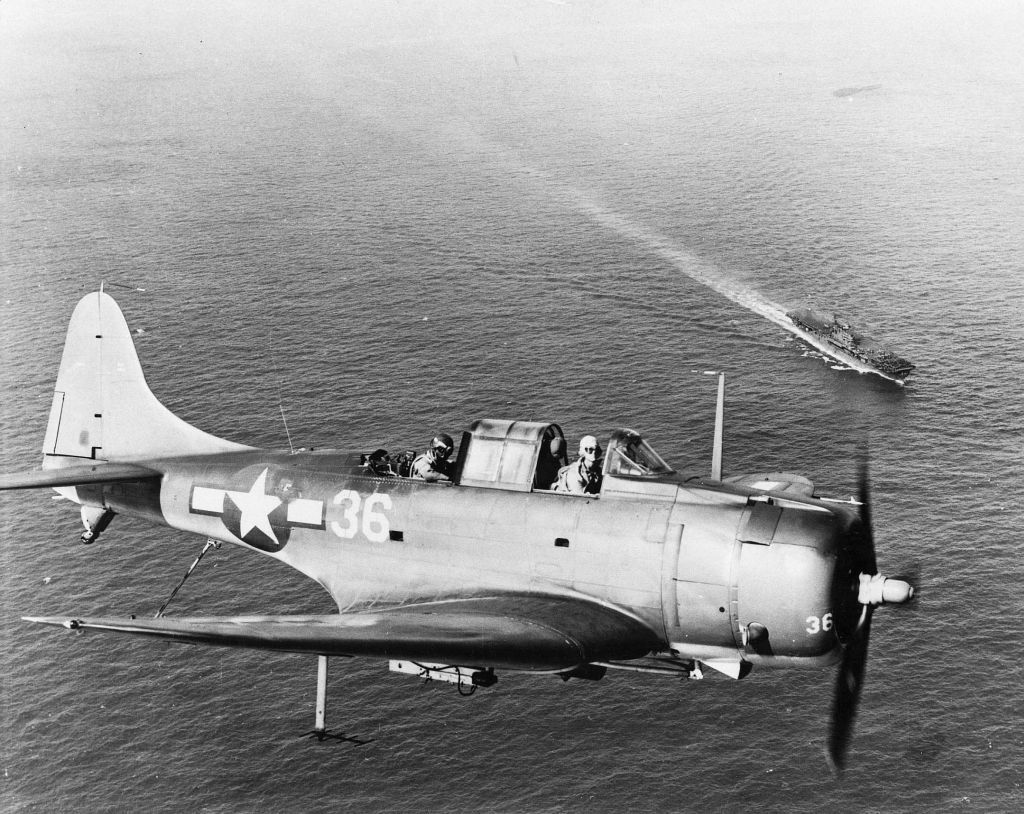

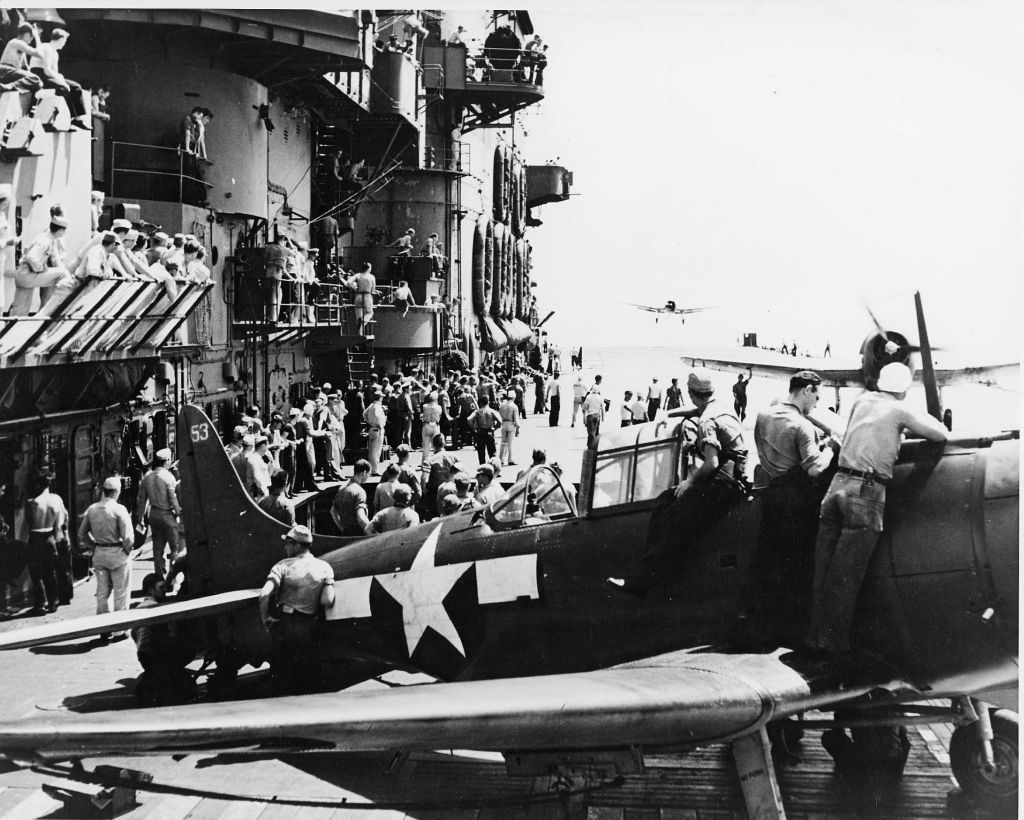
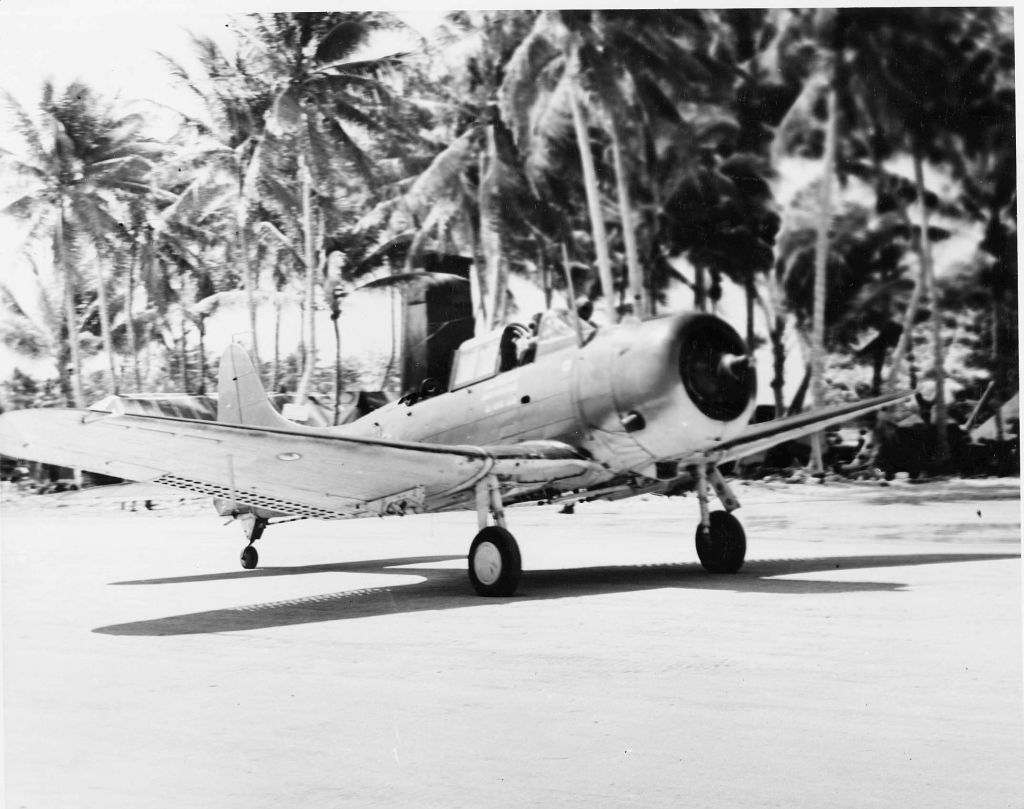




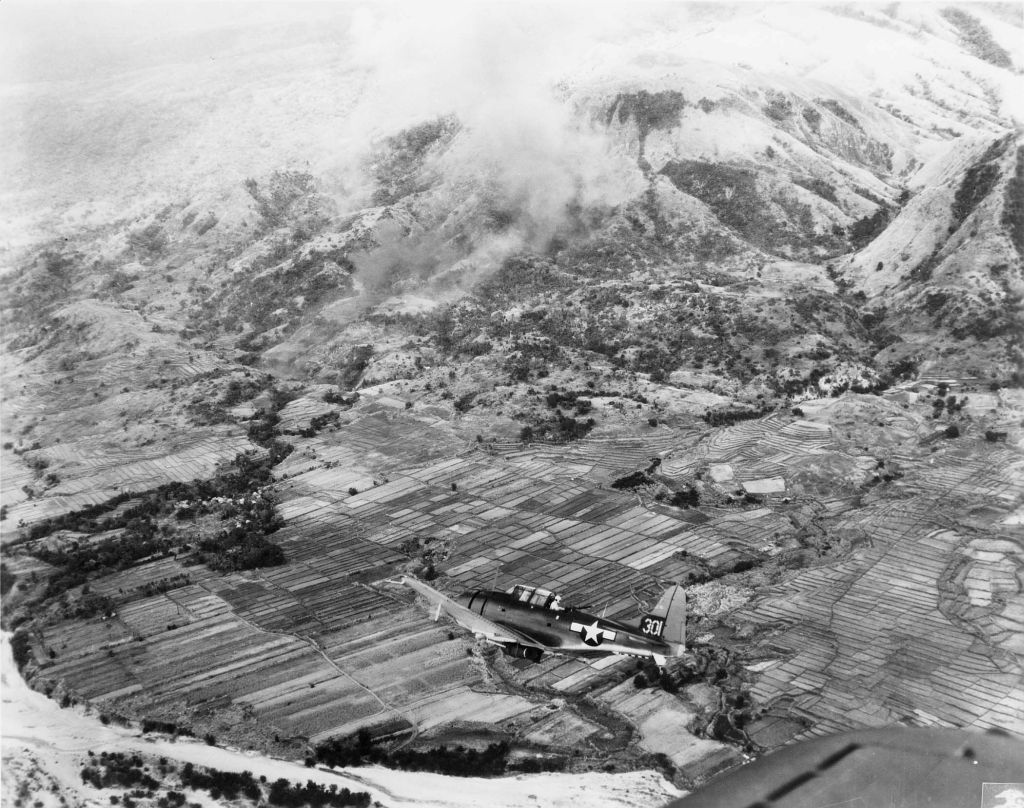
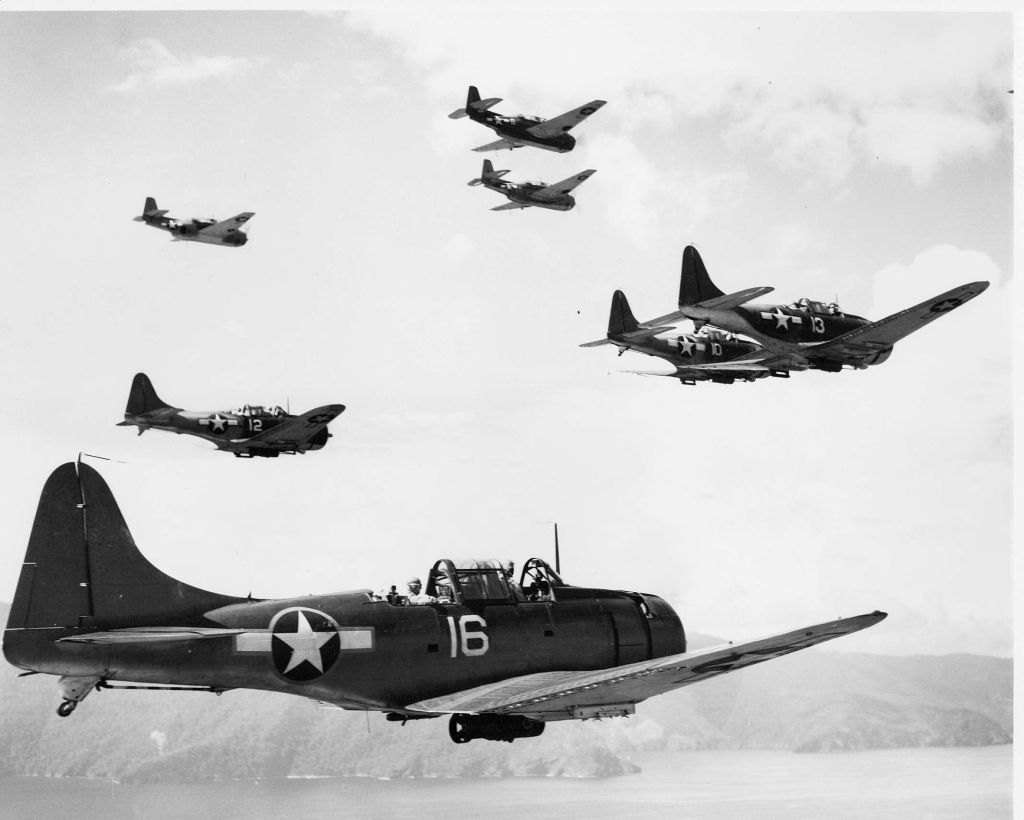


























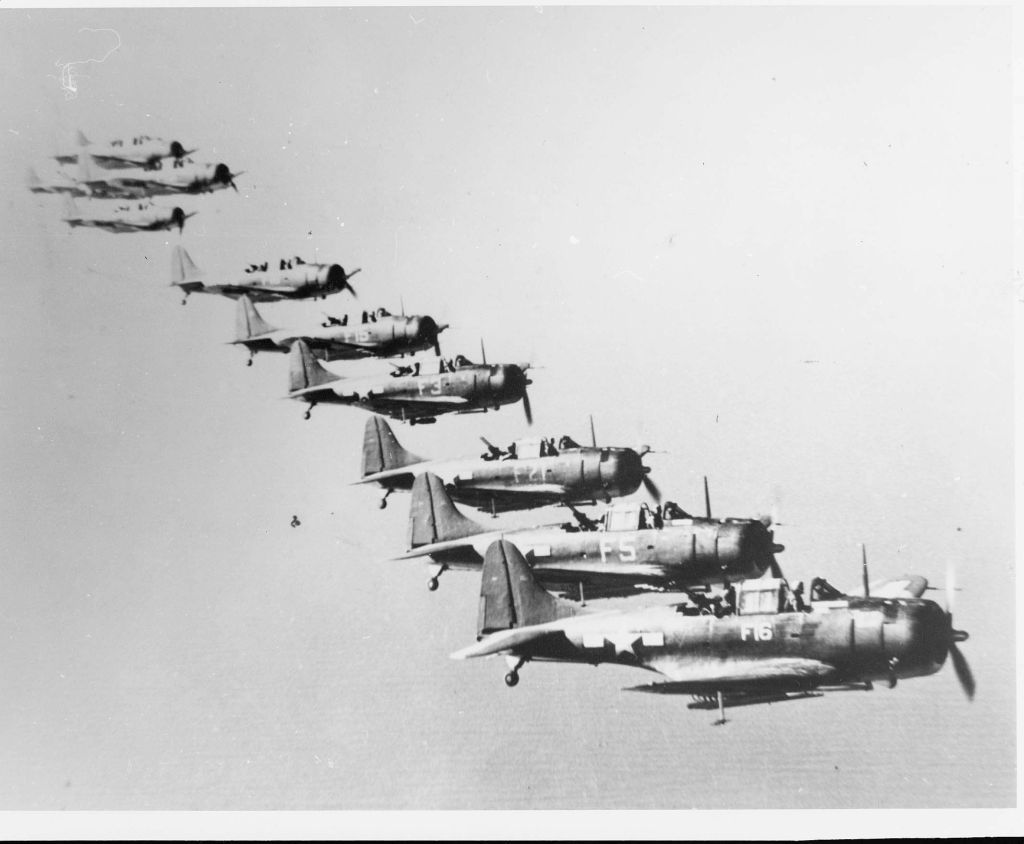

















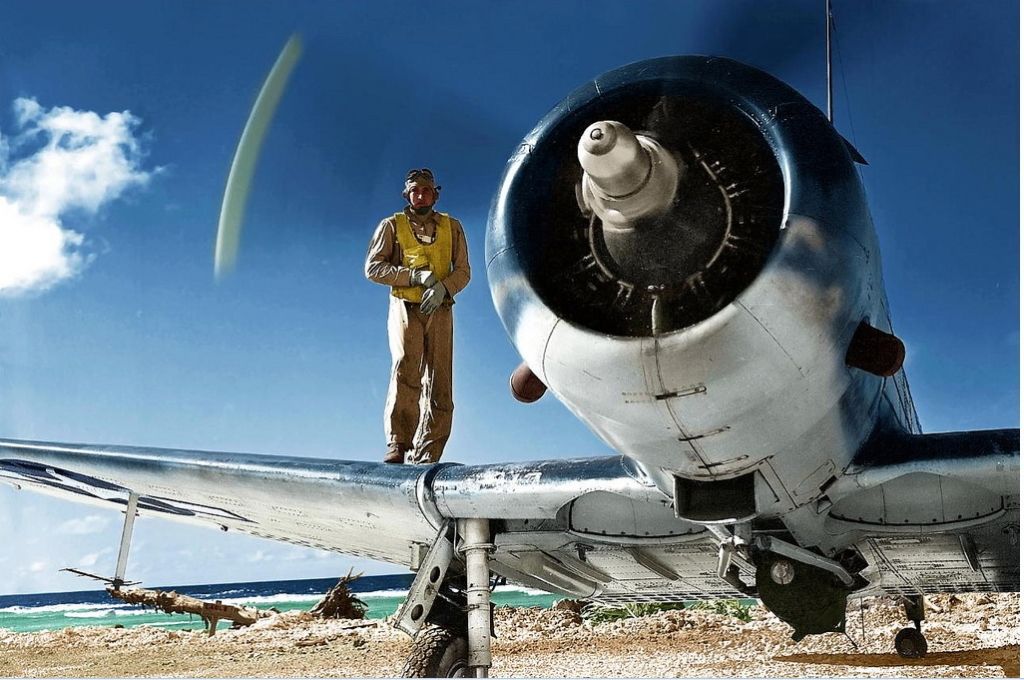
-
13 years agoMon Mar 18 2013, 05:06pm
 Main AdminSBD-6
Main AdminSBD-6
* The SBD-6 was the last production variant of the Dauntless, and featured a further uprated R-1820-66 engine with 1,010 kW (1,350 HP) as well as improved fuel tanks. A total of 450 was produced, with the very last SBD delivered in 1944. The Dauntless was seen as so obsolescent by that time that the SBD-6 wasn't even sent to combat zones, being used for coastal patrol, training, and in the hack role. The Dauntless was quickly withdrawn from Navy and Marine service after the war.



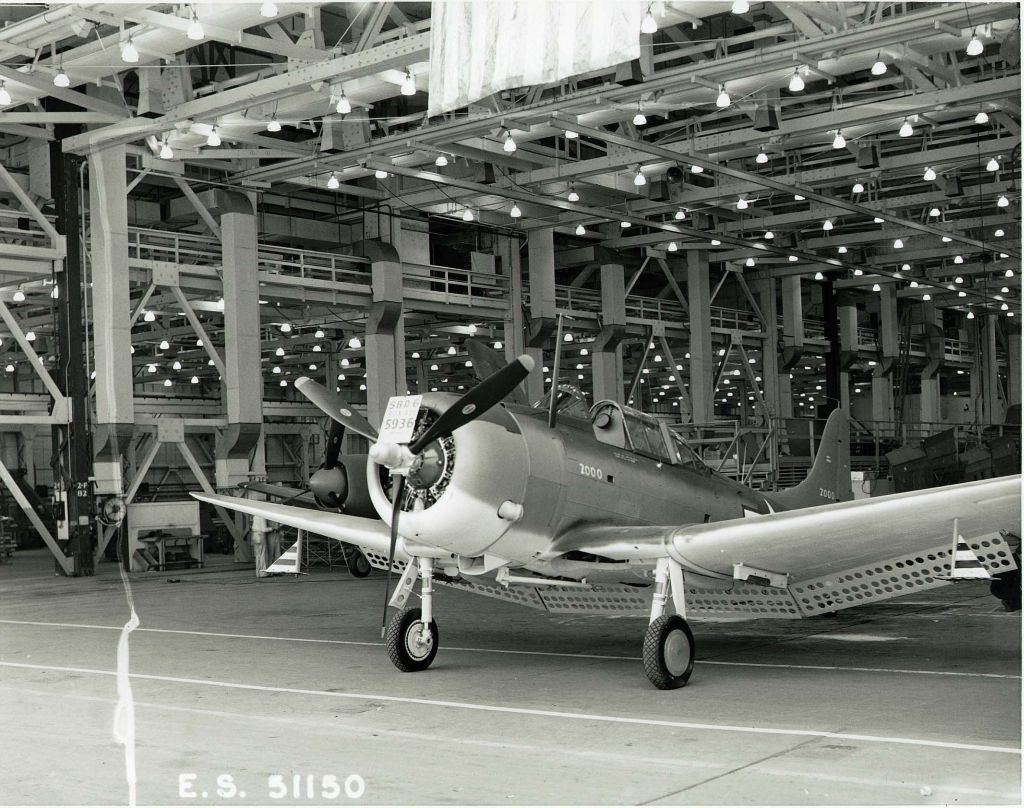
Some sources indicate that small numbers of Dauntlesses were either converted or built as photo-reconnaissance machines, with the designations of "SBD-1P", "SBD-2P", "SBD-3P", and "SBD-4P". However, clear details of these machines are hard to find?????????



OTHER DAUNTLESS USERS
* The Dauntless was used by other air services, but somehow failed to achieve the distinctions made by Navy and Marine SBDs.
The US Army Air Forces (USAAF) took note of the success of the German Ju-87 Stuka dive bomber during the Nazi conquest of France in the spring of 1940, and decided to obtain dive bombers of their own. The Dauntless seemed like it could do the job in the short term, and so the USAAF ordered 78 SBD-3s with arresting hook removed and a bigger, pneumatic rear tire. They were given the designation of "A-24 Banshee" and delivered in the last half of 1941. USAAF crews never developed good rapport with the aircraft and it suffered badly in combat with Japanese fighters. It was withdrawn from combat before the end of 1942 and used for training.
The USAAF did obtain later versions of the Dauntless, however, including 170 modified SBD-4s under the designation of "A-24A" and 615 SBD-5s with the designation "A-24B". Although the A-24A and A-24B didn't see combat with the USAAF, 60 of the A-24Bs ended up being passed on to Marine service as "SBD-5As". Ironically, despite the Air Force's lack of enthusiasm for the type, it remained in service until 1950. Some sources claim a single A-24A was converted into a target drone, with a single A-24B converted into a drone controller, but once again details are unclear. Typical USAAF colors for the A-24 were light gray on the bottom and olive drab on top.
* The British were provided with nine SBD-5s for evaluation, which were designated "Dauntless Mark I". However, neither the British Royal Air Force nor the Royal Navy's Fleet Air Arm were very interested in dive bombers, and though the evaluation was extensive, nothing came of it, the conclusion being that the Dauntless was vulnerable and tiring to fly.
The Royal New Zealand Air Force received 18 SBD-3s and 23 SDB-4s, and did use them successfully in combat in the South Pacific. The Free French used about 80 SBD-5s and A-24Bs as trainers and close-support aircraft. The French Dauntlesses would be the last of the type to see combat, operating during the Indochina War off the carrier ARROMANCHES. The French Navy removed the Dauntless from combat status in 1949, but the SBD was still operated in the training role until 1953.
The Mexican Air Force operated a handful of Dauntlesses for patrol, and was the last military organization to fly the type, removing it from service in 1959. A few were flown in civilian hands for a time, with the excellent handling of the Dauntless appreciated by sport pilots. A number survive as static displays and at least one is still flying on the airshow circuit.
miscellaneous shots !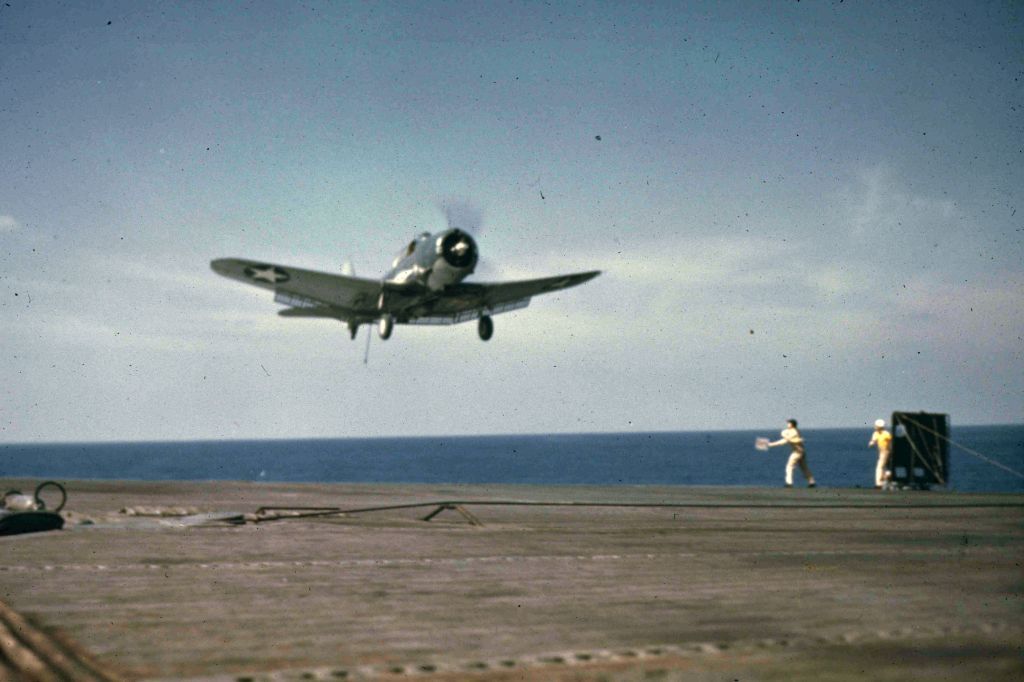















As usual right click for details.
Regards Duggy -
12 years ago
 Level 1Here are some from my blog including some corkers from the LIFE magazine archives
Level 1Here are some from my blog including some corkers from the LIFE magazine archives
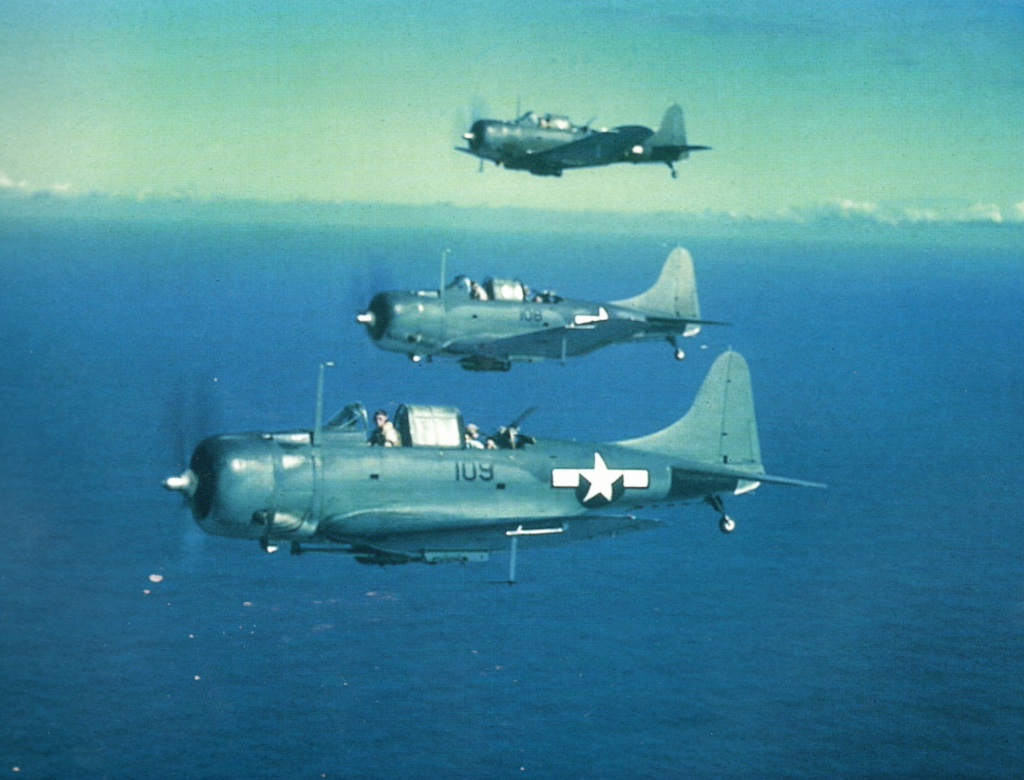
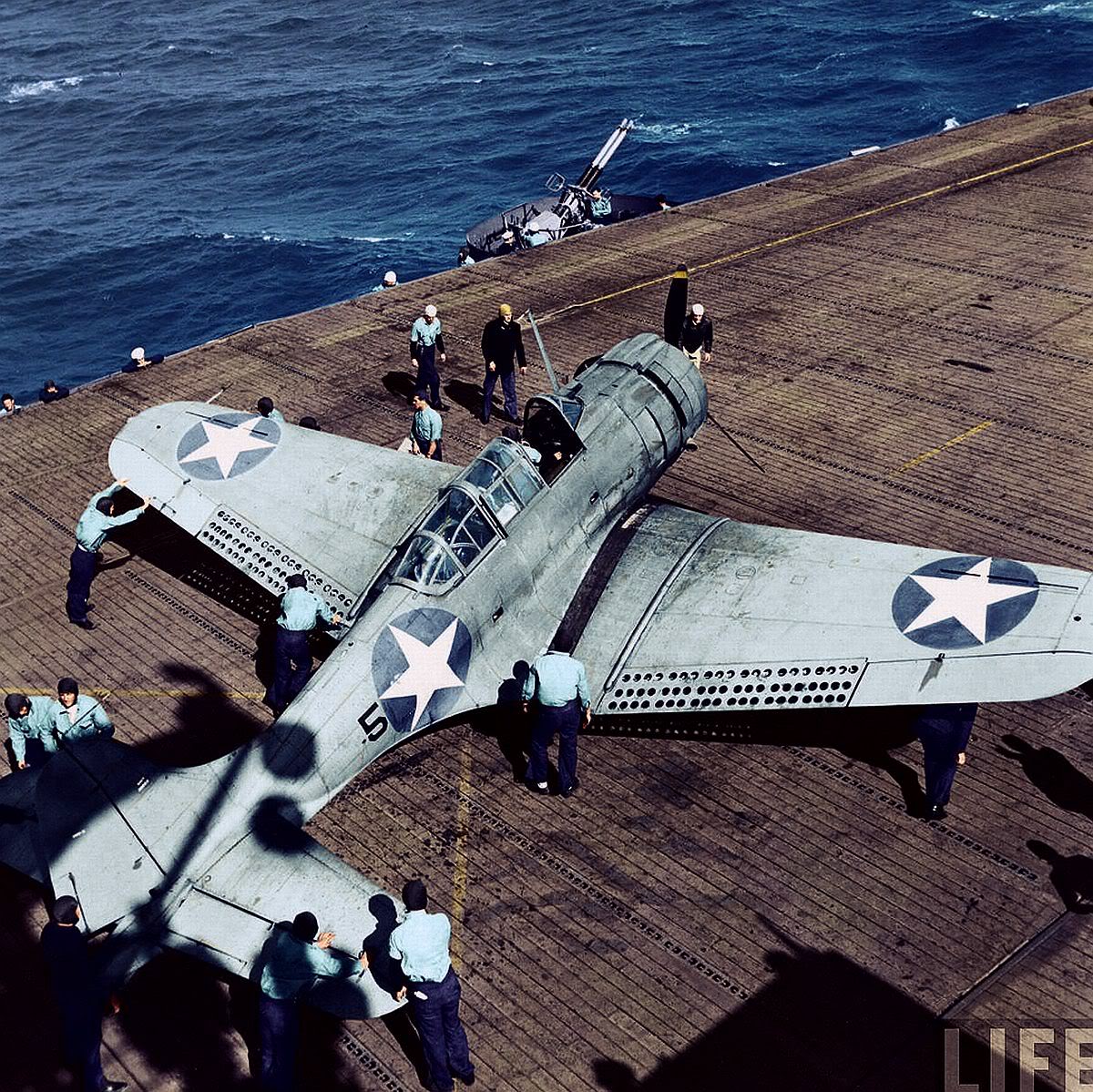
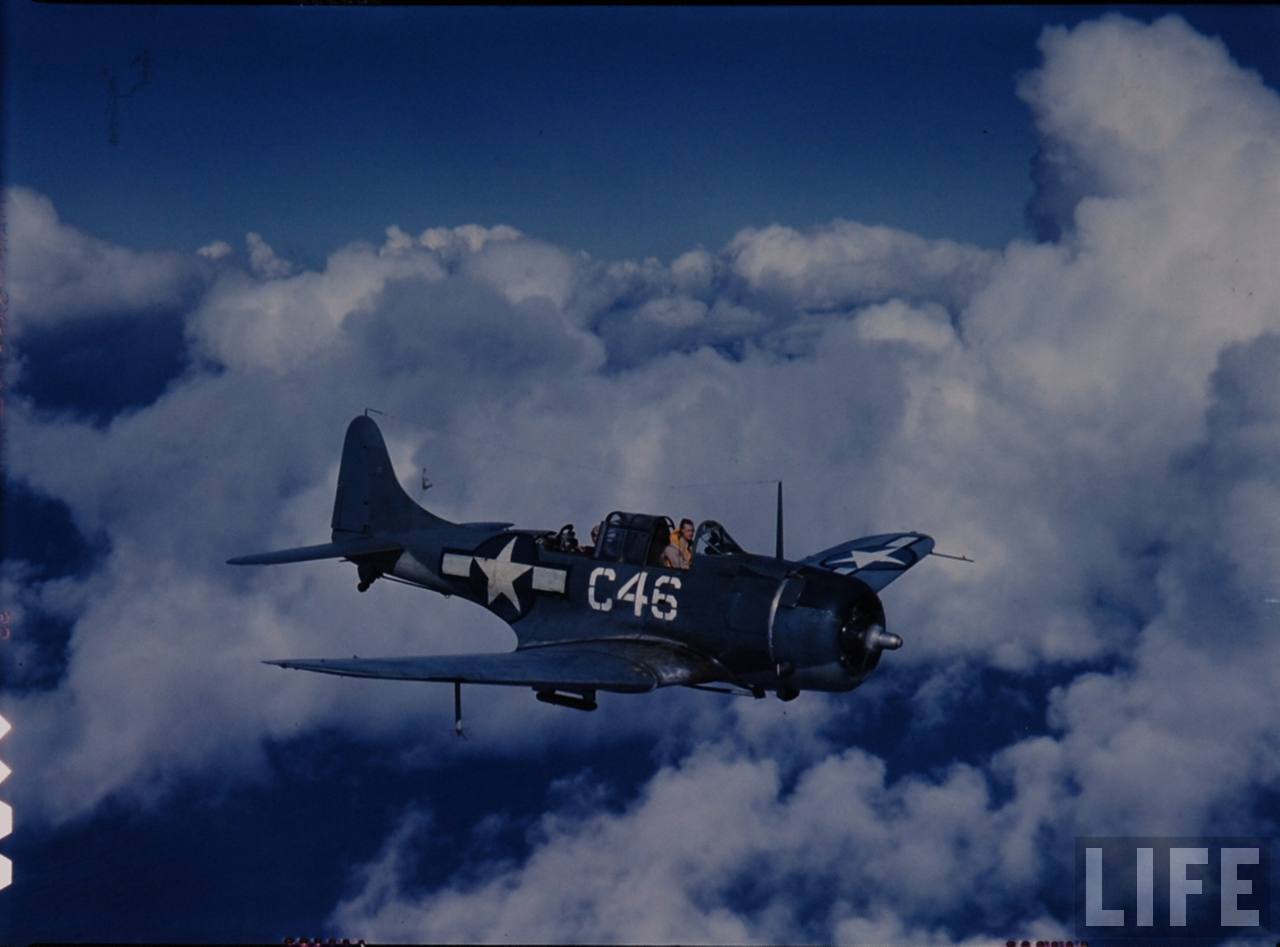
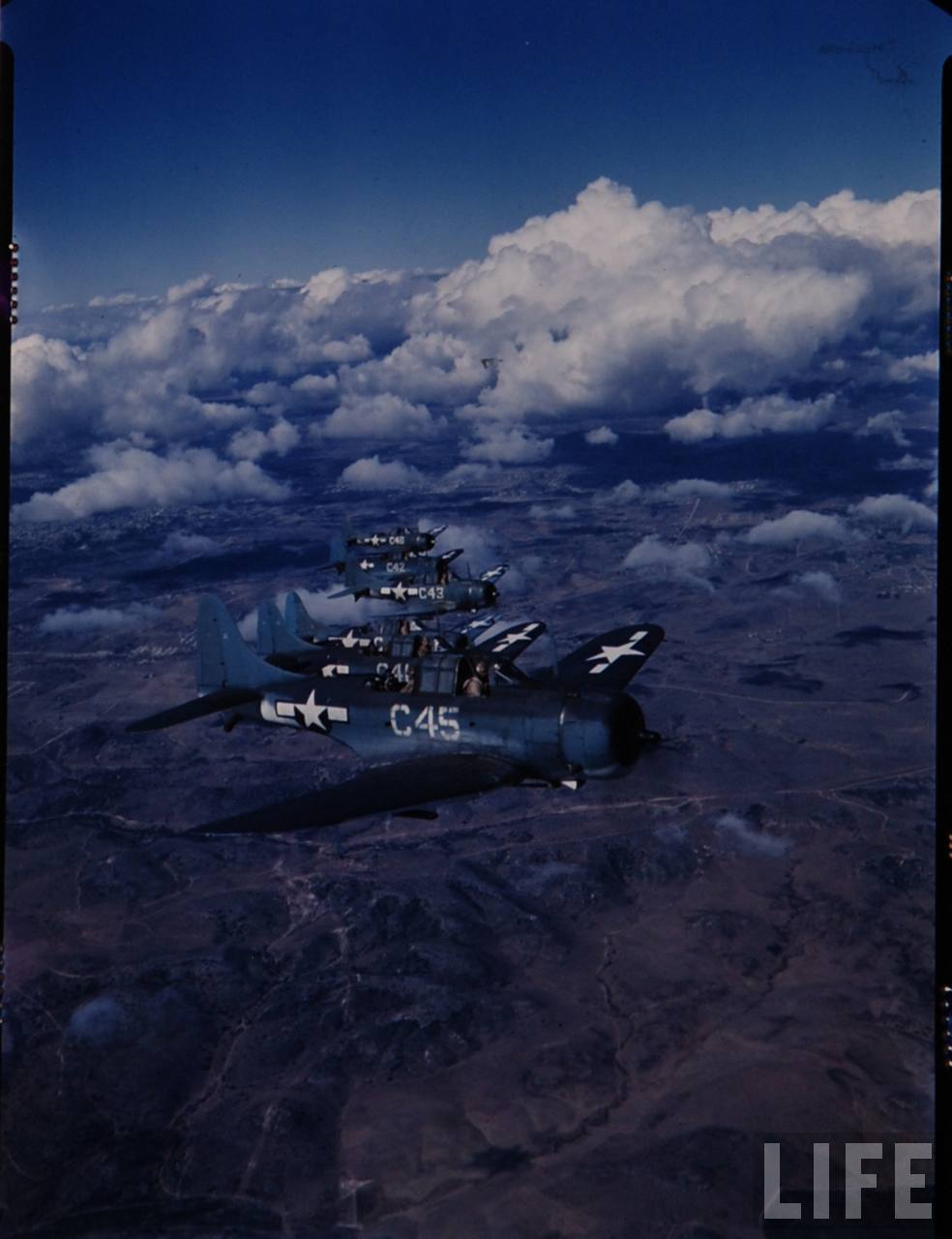
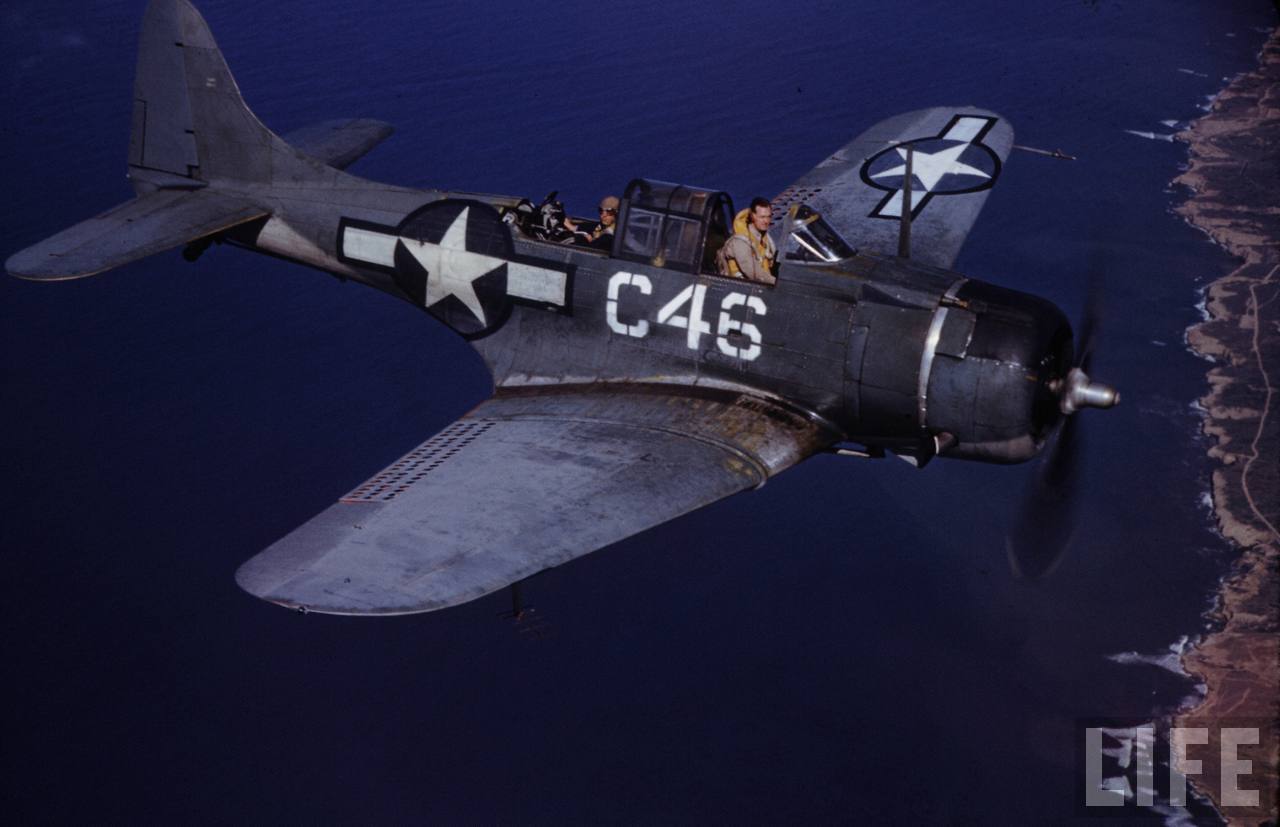
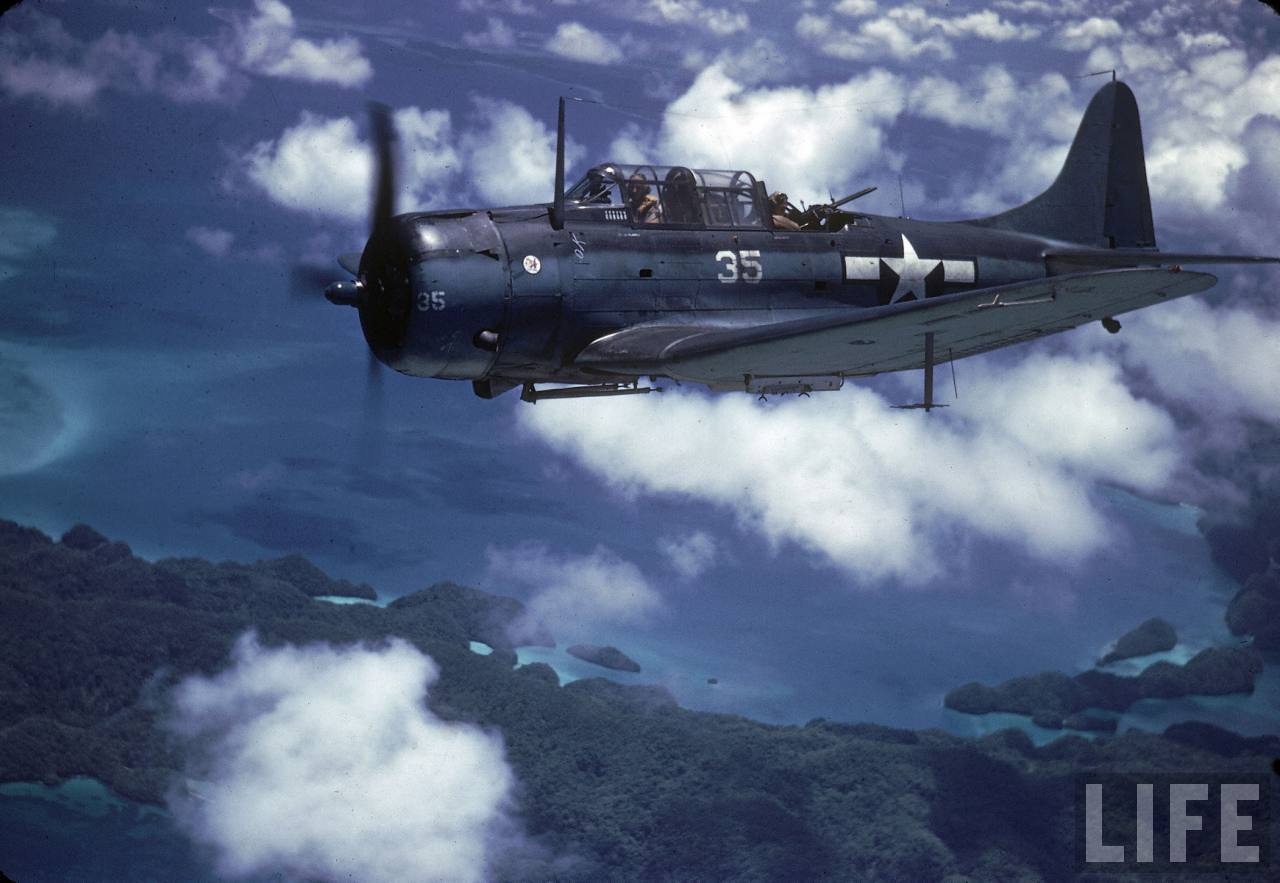
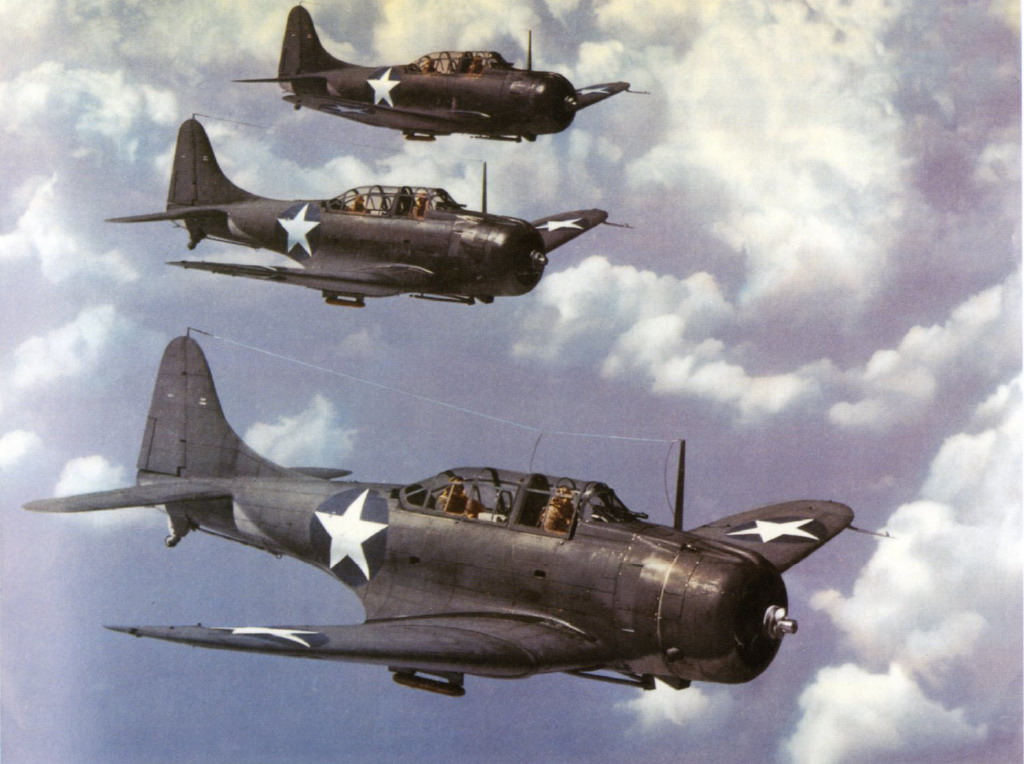
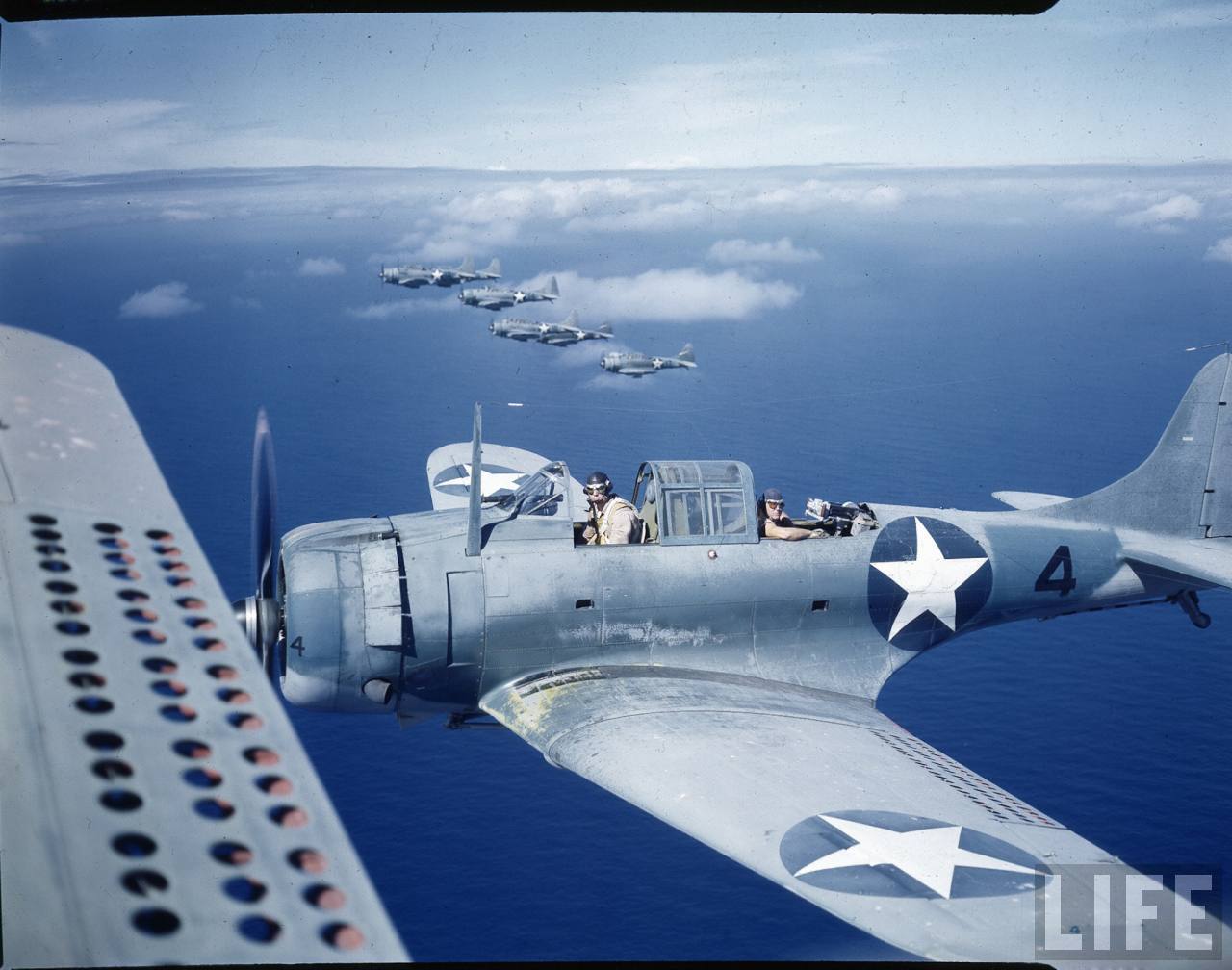
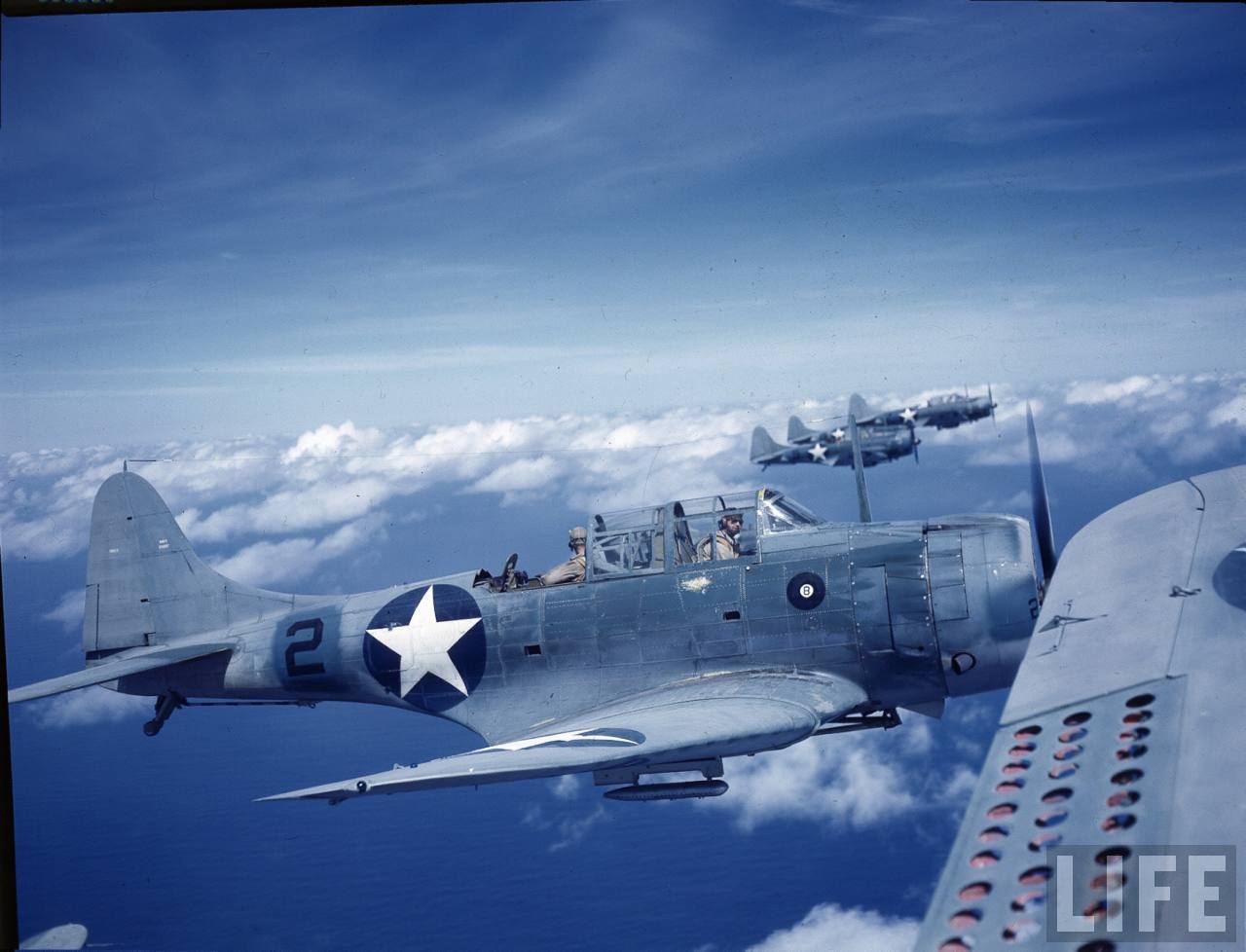
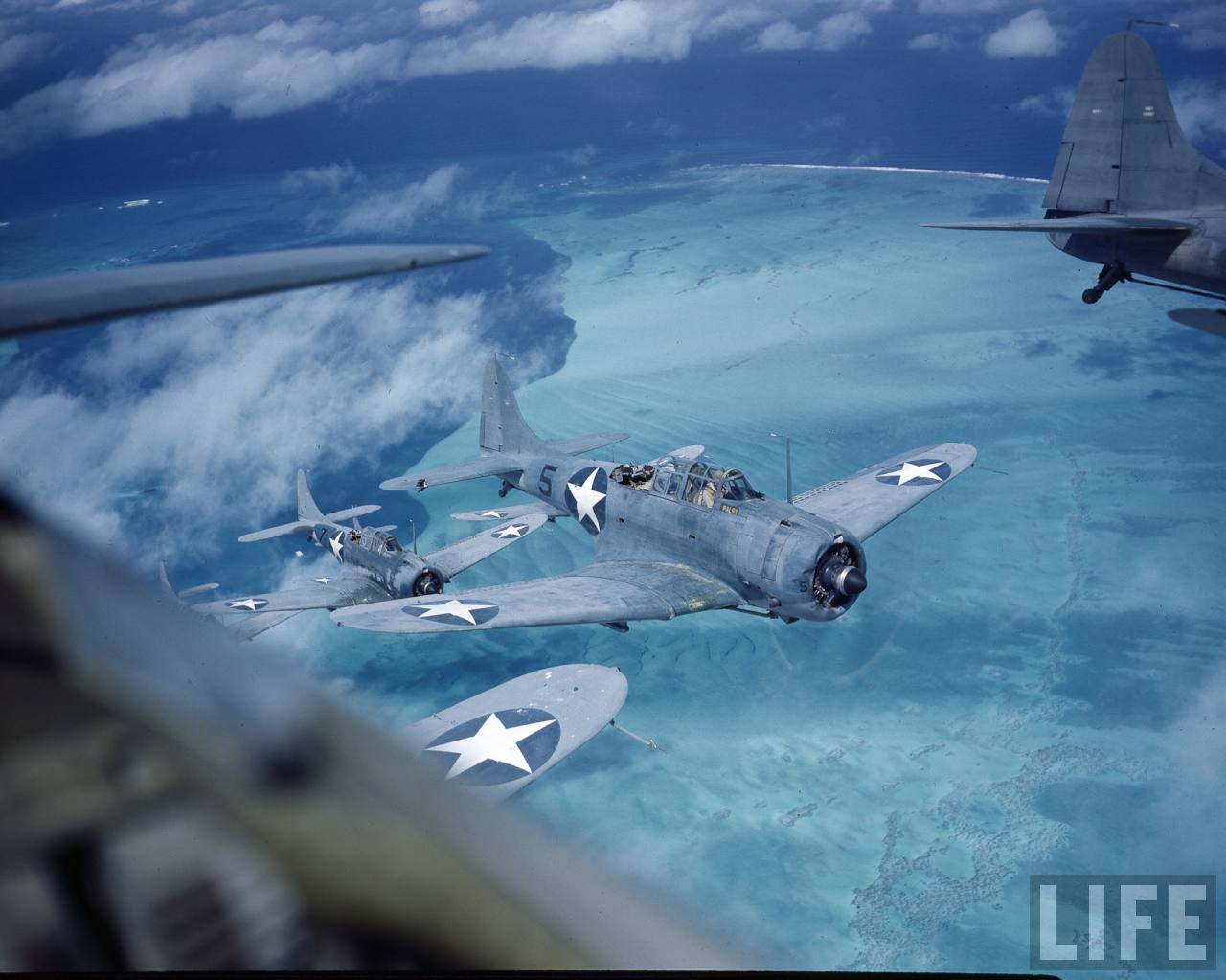

-
12 years ago
 AdminOne thing I noticed in one of the pictures..
AdminOne thing I noticed in one of the pictures..
Note that the prop is still spinning and how close people are on it.
BTW, one of my favourite planes in Il-2. -
 Level 7
Level 7Note that the prop is still spinning and how close people are on it.
RAF_Loke
Didn't notice that, good catch. -
 Main Adminthx guys for this mass of very good pics
Main Adminthx guys for this mass of very good pics -
12 years agoWed Jun 05 2013, 09:28am
 Admin
Admin
+1, this is a great collection.
Boelcke
thx guys for this mass of very good pics
Just to clarify, from what I've read the -3s and -4s received by the RNZAF didn't see combat; rather it was with the -5 (22 received in total) that No 25 Squadron went on ops with. -
11 years agoFri Nov 22 2013, 04:23am
 Level 1The SBD Dauntless is my all-time favorite, here's some pictures I've gathered from around the web I thought to contribute to this wonderful thread:
Level 1The SBD Dauntless is my all-time favorite, here's some pictures I've gathered from around the web I thought to contribute to this wonderful thread:






... and the picture that started it all for me - VMSB-231 in 1944:
and then these are of Commemorative Air Force's SBD-Dauntless today:





Post a reply
- Go to Previous topic
- Go to Next topic
- Go to Welcome
- Go to Introduce Yourself
- Go to General Discussion
- Go to Screenshots, Images and Videos
- Go to Off topic
- Go to Works in Progress
- Go to Skinning Tips / Tutorials
- Go to Skin Requests
- Go to IJAAF Library
- Go to Luftwaffe Library
- Go to RAF Library
- Go to USAAF / USN Library
- Go to Misc Library
- Go to The Ops Room
- Go to Made in Germany
- Go to Campaigns and Missions
- Go to Works in Progress
- Go to Juri's Air-Raid Shelter
- Go to Campaigns and Missions
- Go to Works in Progress
- Go to Skinpacks
- Go to External Projects Discussion
- Go to Books & Resources
